the index





lunges for a catch during the Fords’ game against Bonner Prendergast High School, September 20, 2024
e have potential,” football Coach Mr. Brian Martin said. “We’re right where we need to be. We have not hit our stride yet but hope to.”
The football team is currently sitting at a 3-2 record.
The team opened with a 20-3 win over Wyomissing, which they followed with a 21-13 victory over Gilman. The next week,
the team fell to La Salle College High School 34-6. After that, the team lost to Bonner High School 39-14. Finally, the team rebounded to beat Wyoming Seminary 21-14.
One of the challenges that the team faced this year was the change in coaching assistants.
“Coming into the season with basically a whole different coaching staff is always
Although members of the school’s Soft Robotics Group, known colloquially as “Soft Robotics,” are no longer experimenting with soft materials for their robots, they carry on the group’s legacy of innovation and problem-solving.
Since last October, Soft Robotics’ members Sixth Former Finn Kelly and Fifth Formers Jack Ford and Matthew Cerniglia have worked to design and build what they have coined the “Chess Bot.”
“The robot can play an entire game of chess against a human player on a physical board,” Ford said. “It reads human moves, finds the best possible response, and physically moves a piece on the board.”
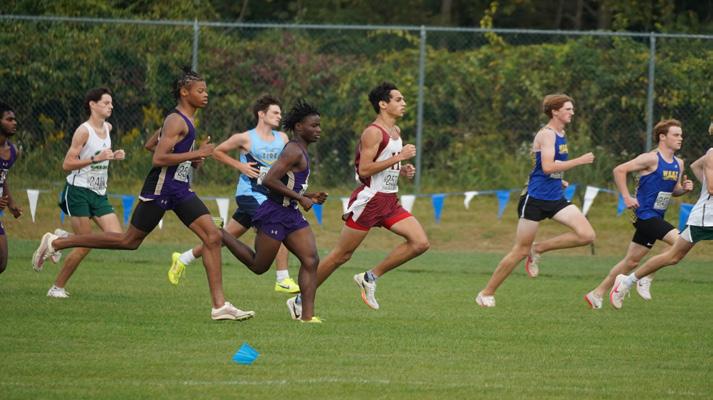
The robot uses linear rails and a belt system to move a “piece grabber” around the board. Kelly, Ford, and Cerniglia took inspiration from the design of 3D printers in the Soft Robotics shop.
“We saw that a 3D printer was, down to its most abstract form, a piece that moved along three linear rails that acted as axes,” Kelly said. “With these rails, the 3D printer could really reach anywhere on the board.”
Initially, the group planned on using a robotic arm to move the pieces.
con’t. on p. 9
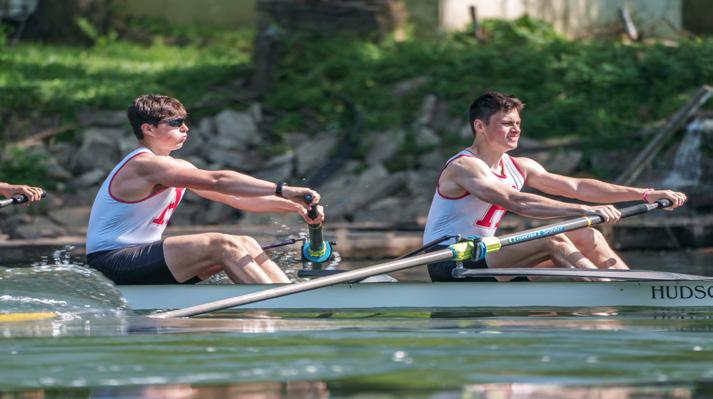
going to be tough,” Sixth Form Captain Josh Williams said. “I think the team has done well in transitioning between coaching styles. One thing that’s different about this year compared to previous years is that we are throwing the ball more. The last few years have been all run-game-based offenses, but this year it’s more of a 50-50 split.”
The team has changed their system dramatically.
“People are playing both ways this year,” Williams said. “Kellen [Gardner ’25], Walt [Frazier ’26], Semaj [Lee ’25], Matt [Jones ’26], and I now have to compete on both sides of the ball. This is due to the depth of our team not being the best. Speaking personally, I need to work on being conditioned to handle starting both ways.”
con’t. on p. 24
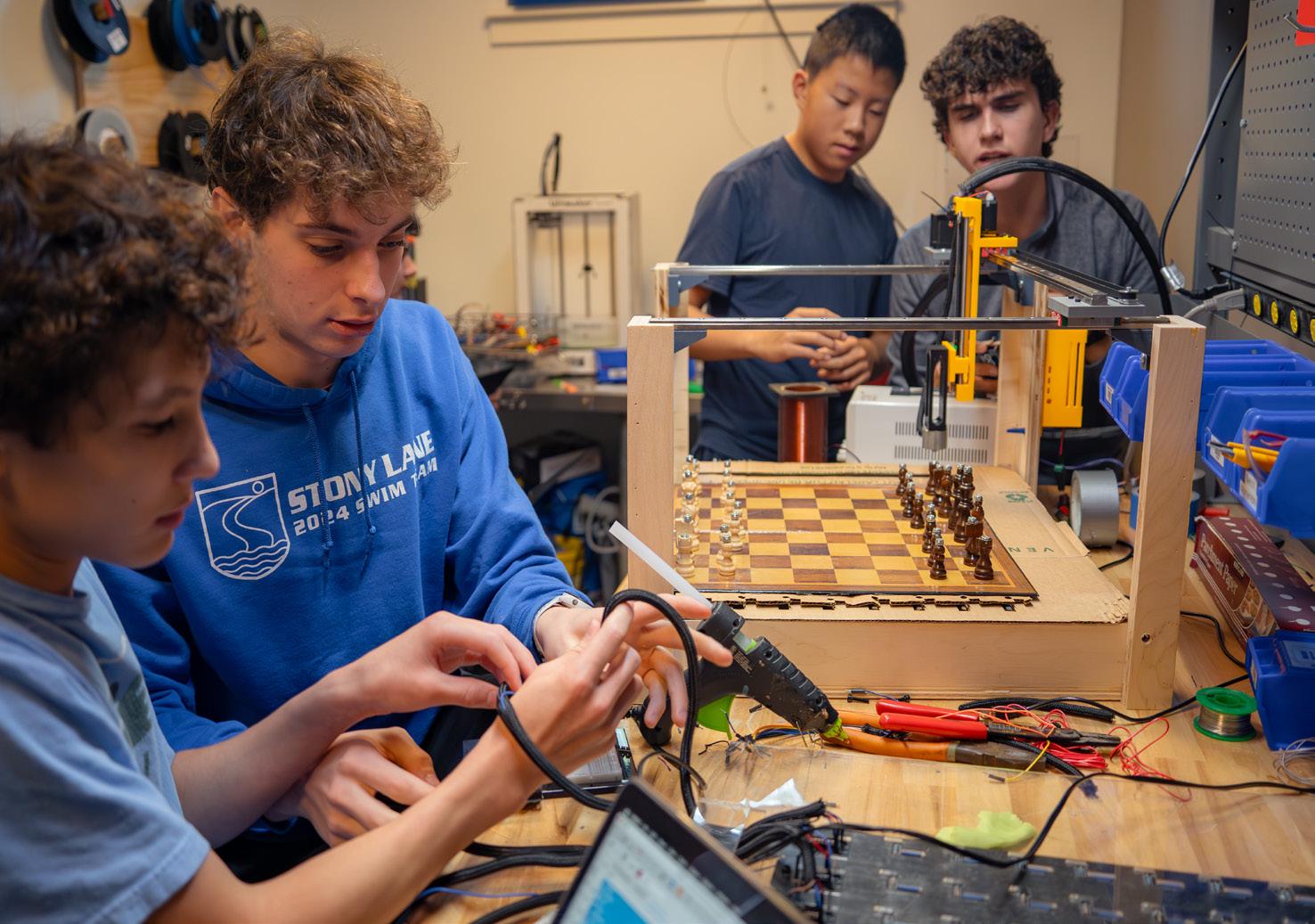
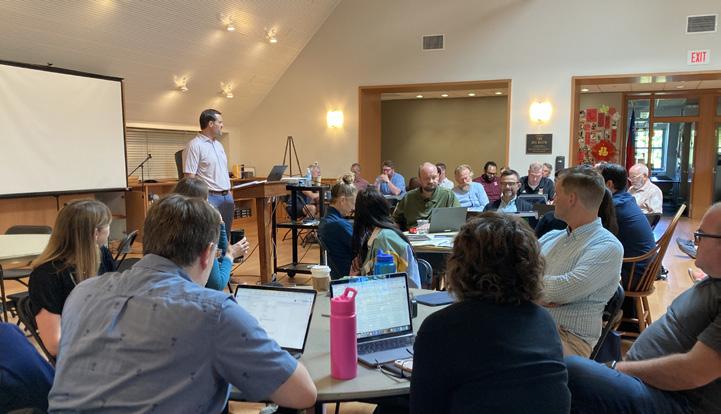
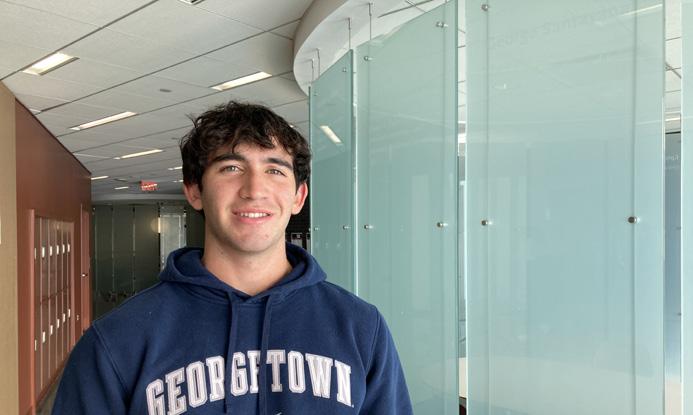
2024–2025 Staff
Ian Rosenzweig ’25
Editor-in-Chief
Connor Simpkins ’25
Editor-in-Chief
Elliot Lee ’25
Senior Managing Editor
Milan Varma ’25
Senior Managing Editor
Liam French ’25
Managing Editor
Abdullah Kanchwala ’25
Managing Editor
Tom Saul ’25
Managing Editor
Ajay Chakraborty ’26 News Editor
Ayush Varma ’27 News Editor
Ryan Wang ’26 Features Editor
Matt Lo ’27 Academics Editor
Adam Brown ’27
Neighborhood Editor
Ryan Hu ’26
Campus Opinions Editor
Peter McConnell ’26
Campus Opinions Editor
Grayson Morgan ’26
Off-Campus Opinions Editor
Michael Bartholdson ’25
Off-Campus Opinions Editor
Luke Ganley ’25 Arts Editor
Quinn Sullivan ’25
Senior Sports Editor
Nate Gill ’26
Junior Sports Editor
Ms. Emily Harnett Faculty Advisor
Mr. Thomas Stambaugh Faculty Advisor
The Index is a student-run publication of the Haverford School that does more than bring news: it provides the diverse perspectives of the Haverford student body. It is an outlet for student writers to take stands on issues they deem important. It chronicles the daily struggles and accomplishments of the Haverford community. The Index also provides a forum for discussion of pertinent issues, such as student culture, academic policy, and Haverford’s place in world affairs. The Index presents new ideas and aspires to influence constructive change.
All opinions and viewpoints expressed herein do not necessarily reflect those of The Index or the school. The Index is designed and produced digitally. Photographs may be retouched. Submissions and letters to the editors regarding any and all articles are welcomed at index@haverford.org
The Index, a member of the Columbia Scholastic Press Association, is composed using the applications of Google Suite and Adobe Creative Cloud. Its surveys are conducted via Google Forms and are advertised on email to current Haverford students. Graphic designs are created by Index staff via Canva. Southern Dutchess News prints 200-400 copies of each issue, and its editorial staff distributes them in the Upper School on the day of release. The Index serves the needs of a total school population of 1152 community members, consisting of 952 students and 200 faculty and staff members.
Contact The Index: 450 Lancaster Ave, Haverford, PA 19041 index@haverford.org
Twitter: @Haverford_Index
Instagram: @Haverford_Index
Volume 92, No. 2 - October 15, 2024
In October 2020, The Index endorsed Joe Biden for president, expressing a desire to see the nation healed and unified. Acknowledging the rightward lean of the Haverford student body, the staff wrote, “This is not a time to vote among party lines.”
With Donald Trump running once again and Vice President Kamala Harris heading the Democratic ticket, this race feels similar to that of 2020. But rather than trust
one candidate to create unity, The Index endorses unity itself.
Rather than frame The Index as a publication for one pole and alienate our readers, we affirm the responsibility of the press to inform, educate, and provide space for debate--not to persuade, shame, or divide.
The next month will bring discourse to our classrooms and community spaces. It is our responsibility to ensure civility. It would be easy to concede Wilson Hall to the over-
whelming forces of polarized America. But let us make our halls a sanctuary, a stronghold against the division that surrounds us.
Buy into brotherhood beyond the rows of Sabol Field’s bleachers and Centennial Hall’s seats.
Seek out opportunities to prove that, with virtue and effort, polarization is null and void.
After all, unity is a choice.

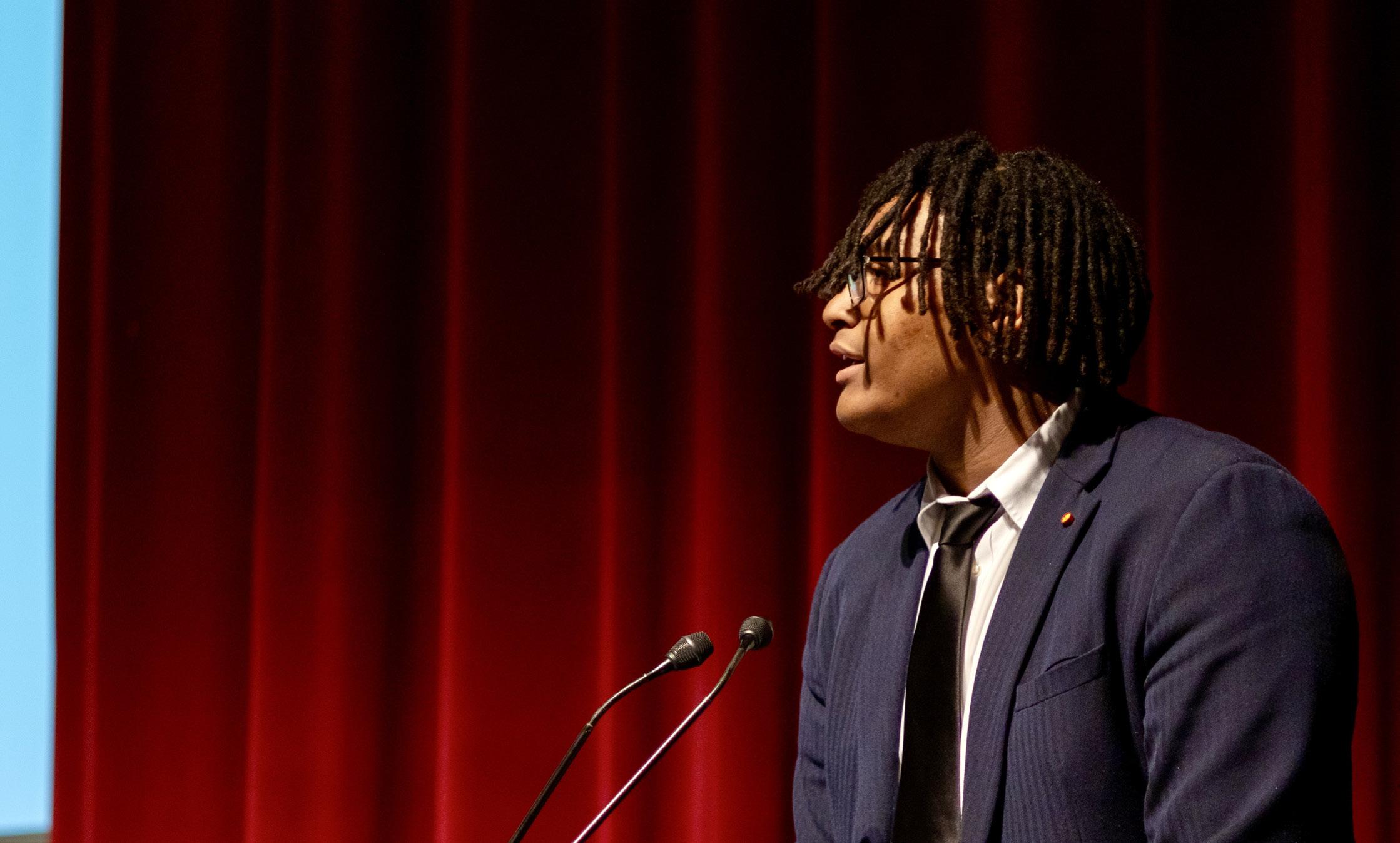
Fords,
We made it through one month of school. For me, it flew by really fast.
In a previous letter I talked about cherishing this year. In a mere eight months, all my fellow Sixth Formers and I will be walking the stage at graduation.
Sixth Formers, we have to make sure we make this year special, not just for ourselves, but for those that come after us. Once we’re gone, it will be on the Fifth Form to be the role models for the school. It will be time for the Fourth Formers to step into the upperclassmen roles. For the Third Form, gone will be the times of being high school new-
bies.
All of us will step into new roles next fall. We have to take this time to prepare for that change.
On a less serious note, October is one of my favorite times of the year. Everyone has finally adjusted to the school routine after months of beach time. Fords football enters the league games. Fall sports ramp up in general. The fall play starts production. Clubs hit their stride. The Phillies go on a historic run. And many more exciting things happen in October.
The first month of school was great, but let’s keep the momentum going for October.
Let’s make Haverford sporting events even more electric. Even if you’re not into sports, show up to a Fords game to support your brothers.
This school only works if we continue to support each other, so let’s continue that support in this exciting month.
Eight months of school left, what are you willing to do to make it special?
Thanks, Josh Williams
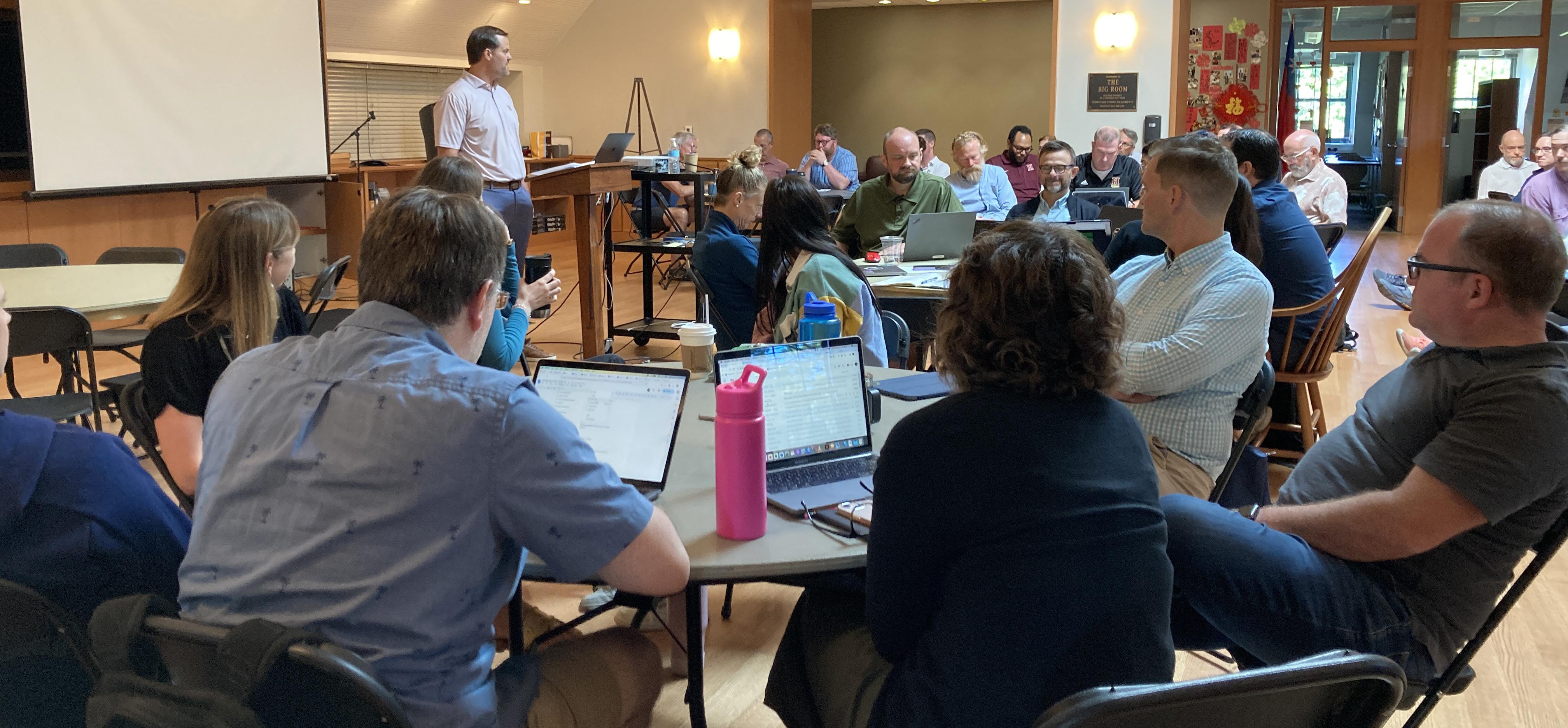
Haverford students were not alone in their required reading assignments this summer. Faculty also engaged in required summer reading, including “Thriving in a World of Pluralistic Contention: A Framework for Schools,” which presents a unified structure for civil discourse in classrooms.
The Framework is written by John Austin, Head of School at Deerfield Academy, developed with support from the E.E. Ford Foundation and in collaboration with several school heads from independent schools around the country.
Head of School Mr. Tyler Casertano explains the thinking behind the faculty reading, saying, “[The point] was to start a conversation with faculty for how we can be a place that invites students into difficult conversations, but in a way that allows them to explore a topic with curiosity and thoughtfulness.”
According to the Framework, independent schools have a different purpose than colleges and universities. “[Independent] Schools are not principally concerned with research and the production of new knowledge. Their purpose is more crucial: to introduce young people to the values, practices, and conventions of disciplined inquiry.”
U.S. History teacher Mr. Timothy Lengel agrees about the purpose of school. “This school does you a disservice if we don’t train you to become more thoughtful, more considerate, and more engaged citizens. One of the best ways that we can do that is by training in civil discourse,” Mr. Lengel said.
“Civil discourse is vital, but the main thing that keeps getting left out is discourse based in fact and evidence,” History Department Chair and Honors U.S. History teacher Ms. Hannah Turlish said.
According to the National Council for Social Studies, civil discourse is “a conversation in which there is a mutual airing of views without rancor.”
In this era of political polarization, where political and social discourse is viewed more as a zero-sum game than a conversation, where social media algorithms impact the development of critical thinking skills, can a framework for neutrality in the classroom encourage classroom civil discourse?
The Framework presents three pillars to help schools form students as distinctthinking individuals: expressive freedom,
disciplined nonpartisanship, and intellectual diversity.
In an interview, Framework author Dr. Austin said, “[Expressive freedom is] an essential precondition for robust inquiry— kids need to be empowered to speak and to listen deeply and thoughtfully. Kids have to be willing to listen to things they really find troubling.”
The idea behind expressive freedom is that students need to be skilled in hearing and responding to views that may feel unreasonable or upsetting. Students need to be able to tolerate hearing views they don’t agree with and to engage with those views in a manner that is respectful.
While this may seem obvious, the current state of political polarization has led to a distinct lack of expressive freedom.
According to an article published in Inside Higher Ed, “Recent surveys show not only that many students find it acceptable to deny a platform to speakers they find objectionable; they are also unwilling to share their viewpoints due to fear of backlash from their peers.”
“We are in a place now where lies and fabrications are treated as truth.”
MS. HANNAH TURLISH
“We are in a place now where lies and fabrications are treated as truth, and to call out the lies is to be labeled as somehow shutting down a valid point of view,” Ms. Turlish said. “I refuse to allow lies to be aired in the guise of truth.”
Within the Framework, expressive freedom includes “fostering in young people the ability to respond to views that seem unreasonable and upsetting; creating a climate where intellectual risk-taking, mistake-making, and question-asking are cherished; and encouraging the broadest possible range of speech among students.”
There are caveats, however. As explained in the Framework, categories of speech, such as speech that is bullying, harassing, or threatening, are legally prohibited. Citing a 2014 University of Chicago report, the Framework explains that there are still lim-
its on expressive freedom, “The freedom to debate and discuss the merits of competing ideas does not, of course, mean that individuals may say whatever they wish, wherever they wish.”
“The larger goal… is to get [students] to a) engage with fellow Americans as good-faith participants in an exchange of ideas, and b) ensure that everyone gets their voice heard,” Mr. Lengel said.
The second pillar of the Framework is disciplined nonpartisanship.
According to Dr. Austin, “The Framework… doesn’t say faculty are prohibited from expressing their own particular perspective or viewpoint in a classroom discussion, but it does say that faculty should exercise judgment and discretion when they do that, and they need to do it in such a way that it supports the autonomy of students.”
“[The Framework explains] that because of the power dynamics in a classroom between a teacher and students, when students think that a teacher has a perspective that they are trying to impose on a student, then the students will [usually] act in a way that aligns with that viewpoint because students are mindful of their grade,” Mr. Casertano said.
According to Mr. Casertano, “It is a teacher’s job to poke and prod students, to expose as many different viewpoints or angles of an argument as possible. That is one of the definitions of rigor in a classroom. It is absolutely a teacher’s responsibility to do that… for all aspects of an argument.”
However, not all teachers agree with the concept of nonpartisanship in the classroom. Some think that being exposed to teachers with a strong ideological stance can be beneficial for students. An article from the National Education Association, Teaching in an Era of Polarization, states that “Neutrality in the classroom is counterproductive if it prevents educators from correcting misinformation and calling out toxic, divisive and racist statements by political leaders.”
The third pillar of the Framework is intellectual diversity. “Exposure to diverse and heterodox ideas inoculates students against unthinking conformity and uncritical orthodoxy and remains a pre-condition for informed civic engagement…The goal of an intellectually diverse curriculum is not reflexive balance or even completeness but the intentional inclusion of competing argu-
ments and theories.”
Will this three-pronged Framework allow for more discussion in the classroom? Perhaps, but the Framework is not without criticism. One cited concern is that the individuals contributing to the document are primarily administrators; few, if any, are actively teaching or engaging with these issues in classrooms with actual students.
Additionally, the Framework is intended for schools and faculty and therefore does not address a key requirement for civil discourse in schools: willing students.
In this era of polarization, where socialmedia algorithms provide a daily dose of information tailored to one’s own biases, it also takes a commitment on the part of students to engage thoughtfully with controversial topics, even when that may not “feel” good.
“Part of our job is to support [students] to embrace complexity to hold seeming contradictory ideas in mind at the same time, to listen to ideas that are new and uncomfortable and not simply agree or disagree with ideas but to take certain points and incorporate them to make your [own] argument more sophisticated,” Mr. Casertano noted.
In Fifth Form U.S. History classes, the Haverford Assembly project introduces students to parliamentary procedure, which offers a structured and formal system for debating issues.
Other humanities classes are less structured, and students themselves are responsible for how they choose to engage with controversial topics.
As the presidential election looms, the concept of civil discourse becomes even more important.
For Mr. Casertano, the school’s goals are clear, “What matters is that… we don’t allow the potential polarity and potential hostility of the election to create polarity or hostility here at Haverford. What matters most to us are the ways you all treat each other and the ways you all treat ideas.”
“So much of our preparation for the election is establishing frameworks and boundaries that give students access to the election, but in a way that upholds our standards of behavior and intellectual engagement here at Haverford[…], creating spaces for students to discuss the election but through the context of the Honor Code and Principles of Community.”
Peter McConnell ’26
When the school year began, students faced what some view as an adverse challenge: Yondr pouches. However, many consistently bring in their Yondr pouches each day.
Fifth Former Thomas Nye says he “hasn’t had any issues so far.”
One of the pouch’s minor inconveniences is locking it when it’s not in use so the pin doesn’t bend. If the pouch is left unlocked, the pin locking the magnets together can easily bend if pressed up against a backpack or another object.
Fifth Former Seth Virmani shuts his pouch outside of school hours, as faculty members instructed at the beginning of the school year, to prevent breaking the pouches.
As far as the Yondr procedures go, Nye seems to represent most students, opting not to walk into school in the morning with their phone in the pouch, but waiting until the beginning of the first period to lock it at 8:30.
Fifth Former Andrew Carrasco locks his pouch “at 8:30 when I have to.”
While some students decide to leave their phone in their car, Nye believes it is a better idea to “keep it with me during the day (in the pouch), just in case for any reason I need it during the day if anything happens.” He reveals that the car is a “less safe spot,” even though “we’re on the Main Line, of all places.”
Virmani agrees “There’s a very small chance it might get stolen. Your car might get jacked [...] not really a good idea.” He argues it’s easier to simply “put it in the pouch.”
In addition, it does not make much sense to leave the phone in the car because Carrasco, along with many other students, is at school after 3:15.
If you stay at school, it doesn’t make sense to then have to take the extra time to
walk to your car, unlock the pouch, and then return to school for your after-school activity.
Carrasco has never left his pouch at home, but he forgets “the pouch in my car all the time” which results in having to go through the process of checking in at the upper school office to confirm the phone is locked.
Upon arriving at school tardy, students must check in at the office and show that their phone is locked.
“The process isn’t hard, but it’s a little embarrassing showing my late slip proving my phone is locked up to my teachers,” Carrasco said. The process ensures uniformity despite varying arrival times.
Few students seem inclined to break the Yonder pouch rules.
“There’s no point [in trying to sneak your phone into school],” Virmani said. Carrasco agrees, but brings up a different perspective, stating he doesn’t “want to have any mistrust with [his] teachers.”
Virmani says he hasn’t broken his pouch, but “they are extremely easy to break.”
Carrasco notes that while he has not yet damaged his pouch, he’s been tempted to when he realized—after reaching his car— he had to walk all the way back to school to unlock it.

Edward Cheung ’28
Free time is quite abundant for students, with the early morning before class, ASB, Community, lunch, and free periods.
This year is unlike any other year, with phones locked away in Yondr pouches. So, without access to their mobile devices, what do students do in their free time?
Fifth Former Ryan Shams, one of the leaders of the Research Club and a Model UN member, says that his free time is mainly
for getting ahead on his work.
“I mainly do homework,” Shams said
Fourth Former Adam Brown, who is enrolled in multiple honors classes, says his days can get quite busy, and utilizing his free period and ASBs can be beneficial.
“Most of the time I use my free periods to do homework for the next day. If I’ve done all my homework for tomorrow, then I’ll probably watch YouTube or play a game.”
Fourth Former Brandon Luong, who is
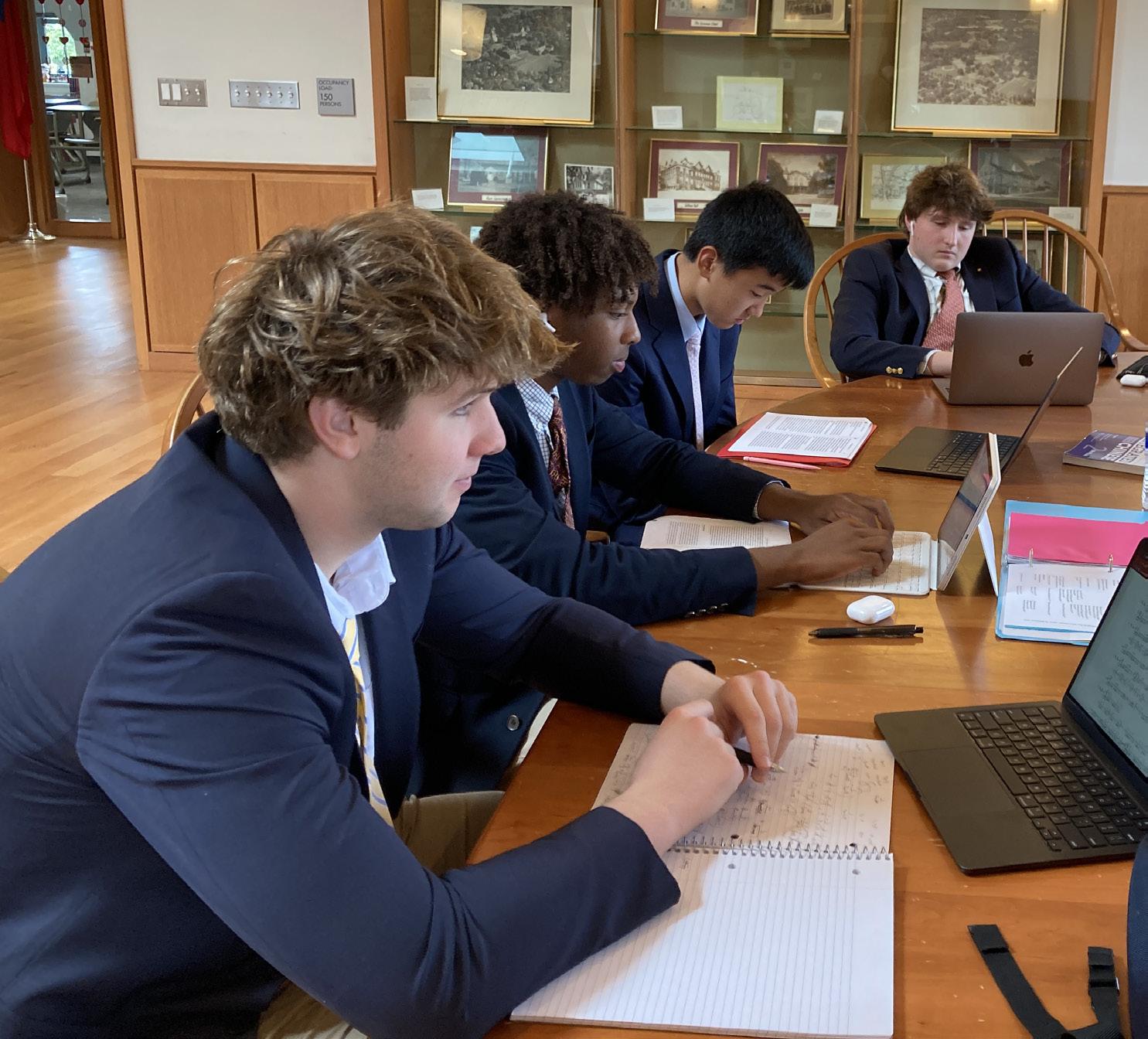
also in multiple honors classes, uses his free time in school similarly.
“I think ASB is one of the most important parts of my day. I can get last-minute work done or prepare for a quiz in the meantime. Some days I’ll be finishing up a reading for history or finishing a Harnett reading before class. I like to call that ‘time management’ because it’s time well spent,” Luong said. “As for my free periods, I am probably using it for double lunch to talk to some friends I normally never have lunch with.”
Fourth Formers also seem to use their time wisely, getting ahead in homework or socializing with their friends.
Third Formers don’t have free periods, but they do have study halls.
Third Former Ali Torabi, who is a varsity football player and wrestler, said, “I think the study hall should be exactly that; a place to study. Kids need to take advantage of the newfound time and freedom we were given to get work done”
During his free blocks, such as ASB, lunches, and early mornings, Torabi also tries to do schoolwork.
“I usually just find a quiet spot and do homework. It’s boring at times, but as a student-athlete, I know that school always comes before sports, so I make sure I have nothing left for me to do after practice,” Torabi said. “If I’m fortunate enough to not have anything to be working on, I enjoy going to the café with friends to grab a bite or walking around the campus to get some fresh air and give my mind some rest.”
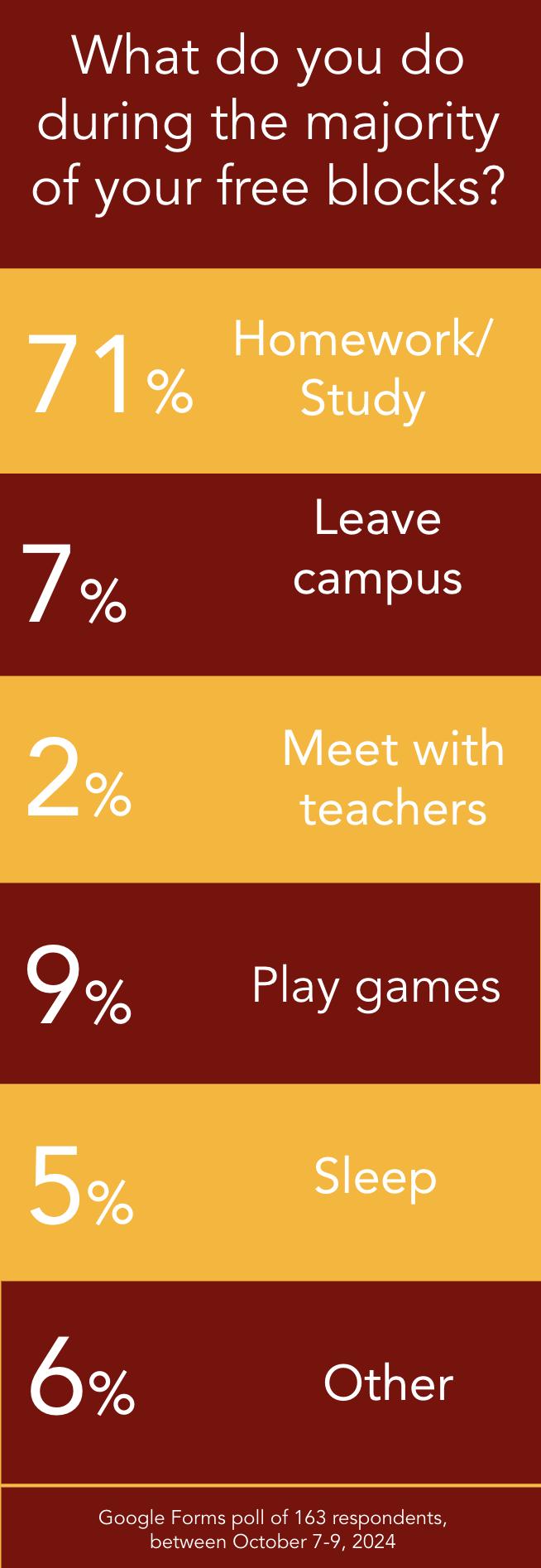
In light of the recent controversy surrounding Sean “P. Diddy” Combs, many students, educators, and adults in the Haverford community are asking, “What’s the deal with Diddy?”
Sean Combs, known by his stage name “P. Diddy,” was born on November 4, 1969, in Harlem, New York. Combs quickly grew into one of the biggest sensations in hiphop. However, his empire has recently come crashing down.
He was first accused of sexual abuse in November 2023. This resulted in a civil lawsuit.
On September 16, 2024, he was detained and later arrested for racketeering and sex trafficking offenses. He is currently being held at the Metropolitan Detention Center in Brooklyn, New York.
Haverford community members have had different initial reactions to the controversy surrounding Combs. Some have responded with relative indifference towards the situation, trying not to make a difficult topic more prominent. They believe the
“I absolutely think there is a lack of masculine role models in our society today.”
SETH VIRMANI ’26
community should do the same.
“I don’t think there needs to be a reaction. There are always going to be people at Haverford talking about Diddy, but that is to be expected with any prominent figure facing serious allegations,” Sixth Former Davin Schulson said.
Fourth Former Patrick Reno said, “I feel like this matter should stay out of school. [Combs] has never been involved a lot in Haverford culture, and with these new allegations coming out it should stay this way.”
Others see the allegations against Combs as something that needs to be talked about, touching on many different themes of our modern world.
“In my eyes, Sean Combs is in the same
boat as any other sex offender. His past fame holds no merit, and I honestly don’t care about his past work,” Fifth Former Ranvir Gill said. “If convicted, he should be held to the same level of punishment as any other member of society who committed this felony.”
“My initial reaction was with shock,” said Fifth Former Seth Virmani. “To see someone who was at the front of the music industry be accused of those horrifying crimes was really shocking.”
History Department Chair Ms. Hannah Turlish said, “It is just another story of the patriarchy getting its way until a longoverdue trial, a trial which may or may not do something to address global misogyny.”
Especially at an all-boys school like Haverford, the fall of ‘Diddy’ has raised concerns about the lack of positive masculine role models in our modern society, as Combs was considered someone young men could look up to.
“I absolutely think there is a lack of masculine role models in our society today,” Virmani said. “There are very few positive male influences who young men want to be like in our world today.”
“Being a man is hard, and good male role models are needed. It is important that we don’t have kids and adolescents looking up to people like Diddy, now that we know what his true character is,” said Gill.
However, some think Combs is an exception, and there are still many people for young men to look up to.
Schulson said, “I don’t think there is a lack of masculine role models, and people just need to go out of their way to find others they can look up to.”
The word ‘Diddy’ is now often used as a humorous and commonplace term, which some people in the community have reservations about.
“There is nothing humorous about Diddy or this topic,” Ms. Turlish said. “His existence is tragically trite and commonplace.”
“People are uneducated about the extremity and severity of the crimes Diddy committed, which is a problem,” Gill said. “We shouldn’t consider the word ‘Diddy’ to be funny, as people were seriously harmed

because of him.”
However, some people think Haverford recognizes the controversy surrounding Combs, and believe the school should not have to change its culture because of him.
“Diddy, as a word, is kinda like other ‘brain rot’ terms and shouldn’t be taken seriously in school,” Reno said. “At most maybe try to limit students from saying or men-
tioning Diddy in class, but I think no more action is necessary. When you’re using the term Diddy, you’re not being sincere about his actions.”
“People joke about various criminals all the time, and it hasn’t really been an issue,” Virmani said. “People at Haverford haven’t really gotten offended by the language about Diddy.”
Ayush Varma ’27
On Friday, October 11, when leaves drifted peacefully to the ground, friends and family gathered to support their teams, locals brought home pumpkins for carving, and cooks laid apple pies into warm ovens, two grades took the digital PSAT.
The Fourth and Fifth Forms sat to take the newly digital PSAT while the rest of the school engaged in other activities. The PSAT (Preliminary SAT) is both a practice ver-
sion of the actual SAT and a National Merit Scholarship Qualifying Test.
This year, Haverford had sixteen students recognized by the National Merit Scholarship Program: semifinalists Michael Barthaldson, Devin Carpenter, Elliot Lee, and Ian Rosenzweig; and commended scholars Alexander Borghese, Gabriel Crowder, Alexander Dardarian, Kai Degenhardt, Luke Gantley, Finn Kelly, Phineas Manogue, Al-
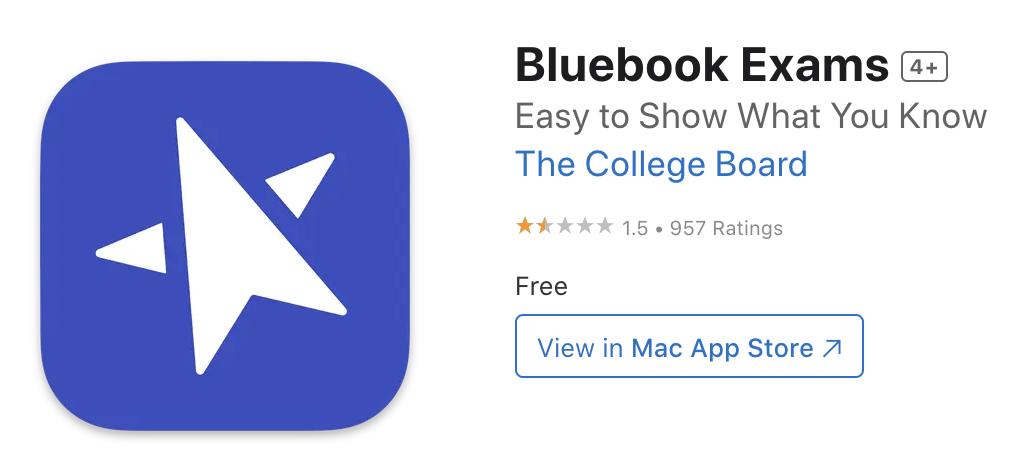
Cameron Smith, and Simon Wang.
“The test is easier to take, shorter...”
THE COLLEGE BOARD
Prior to last year, the PSAT was administered on paper, and students used to sit in their classrooms for two hours and 45 minutes to complete the exam. The school again acted as a test center, organizing and administering the exam on designated dates, but now, students took the exam on their laptops.
According to the College Board, which administers the PSAT, “the test is easier to take, shorter, has more time per question, and comes with a built-in calculator.”
On the digital PSAT, 60 minutes are as-
signed for the Reading section, 35 minutes for the Writing and Language section, and 70 minutes for the Math section (divided into a 25-minute no-calculator portion, and a 45-minute calculator-allowed portion).
The PSAT has a similar structure to the SAT. Both are adaptive tests, meaning that the questions a test taker receives depend on how they answered the prior questions. The SAT moved to a digital format this past March.
Unlike the SAT and PSAT, the ACT offers both paper and digital tests.
The ACT is changing format in April 2025. Changes include a shorter test duration, giving students more time to respond to each question. The test will last approximately two hours, compared to the previous three hours, making optional the Science section, which has 44 fewer total questions.
Both the SAT and ACT test aim to show how prepared you are for college, while the PSAT provides practice, and for a select few, the chance to qualify for a National Merit Scholarship.
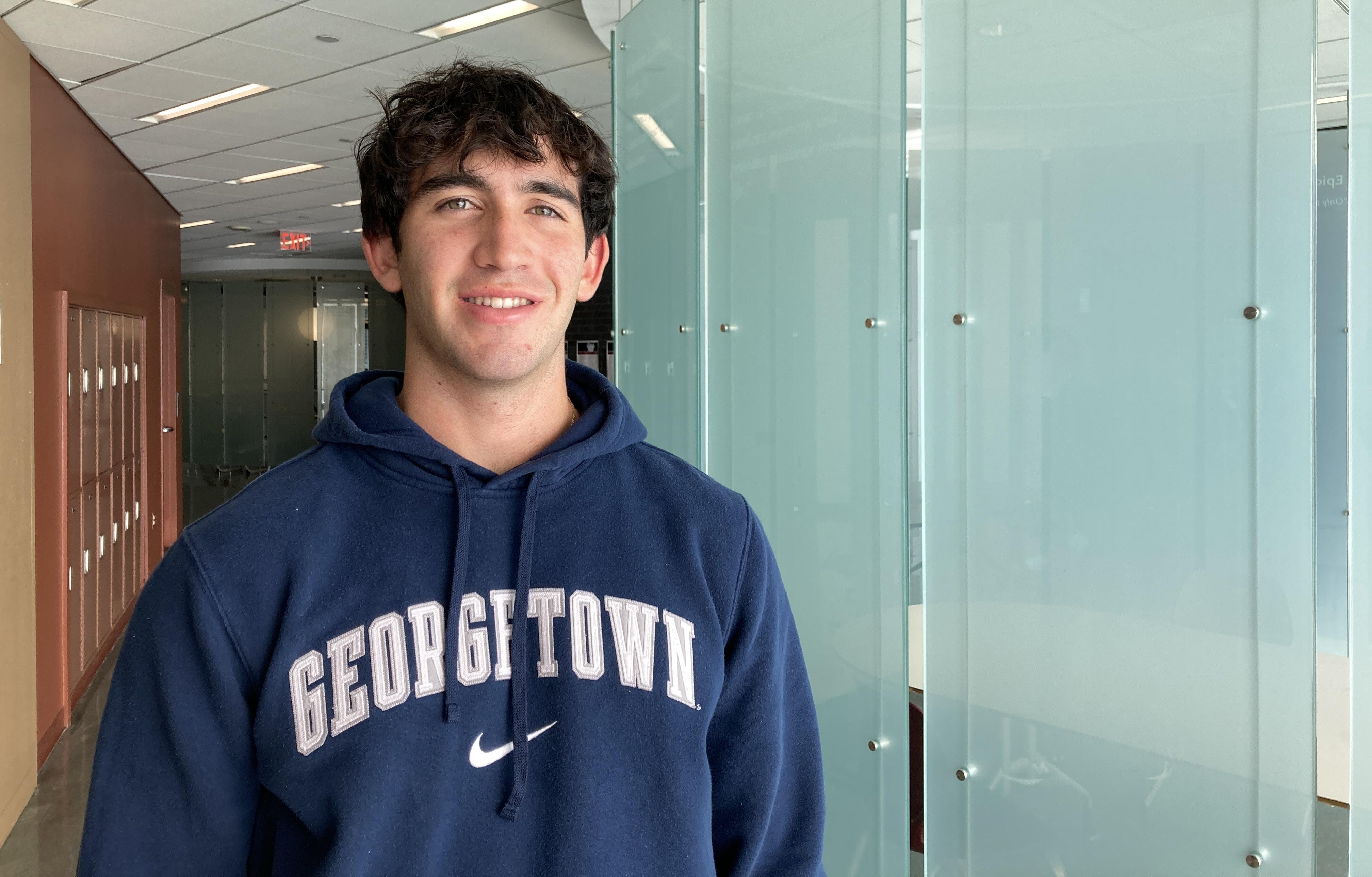
In the fall of 2021, Sixth Former Noah Kanefsky entered his first day at Haverford. As a new student, Kanefsky struggled to find his footing.
“I didn’t know anyone except for one upperclassman and a few guys in my grade. And I didn’t really know them too well either,” Kanefsky said. “I saw upperclassmen say hi to the guys in my grade, but not to me.”
Adding to his struggles were his insecurities about his body. Standing at 6’1” and just 145 pounds, Kanefsky felt inferior to “those guys”: the bigger and more imposing upperclassmen.
Kanefsky initially came to Haverford to pursue baseball, but he needed a second sports credit and decided to pick up crew in the fall of his Third Form year. “I saw alumnus Wyatt Johnson ’22 break the school 2k record at 6:14. He was a massive guy— weighing 240 pounds,” Kanefsky said.
“They were intimidating guys to me. I felt weak and didn’t like how I looked. I wanted to look like them.”
NOAH KANEFSKY ’25
Weighing almost 100 pounds more than Kanefsky, Johnson, along with many other larger students, motivated Kanefsky to get bigger. “They were intimidating guys to me,” said Kanefsky. “I felt weak and didn’t like how I looked. I wanted to look like them.”
Over the next two years, Kanefsky committed to getting more fit, gaining 50
pounds in the process.
“It was a fun weight-gain process, and I’m super happy I went through it,” said Kanefsky. “I became a lot more educated about nutrition and the body through the process, and I was able to try so many different methods.”
Kanefsky’s parents supported him every step of the way. “I took pictures every day, weighed myself every day, and tracked my food and my lifts in the gym,” Kanefsky said.
Still, Kanefsky’s freshman year was not without struggles. Kanefsky struggled to fully focus on himself, especially academically; Kanefsky finished his freshman year with a 3.3 GPA.
Kanefsky completely changed his approach during his sophomore year.
“I changed my habits. I changed my lifestyle,” Kanefsky said. “I tried all sorts of things with the goal of improving myself.”
He experimented with new study techniques, even placing sticky notes on mirrors. It paid dividends; Kanefsky finished his sophomore year with a 4.0 GPA.
Kanefsky also made strides physically during his Fourth Form year. “I fell in love with working out, not so much to be the best rower, but to develop my body and to improve myself,” Kanefsky said.
He also decided to commit fully to rowing. As a result, he finally got to know his teammates well, which helped his social life too. “Before then, I felt the need to convince myself and prove to others that I was worthy of their respect,” Kanefsky said.
Kanefsky’s performance in the boat and classroom continued to improve during his junior year. He maintained a 4.0 GPA while enrolling in three honors classes. In rowing he won the city championships twice, the SRAA nationals, the summer nationals, and the Stotesbury Cup, the biggest high school race in the world.
He also became the third Haverford stu-
dent ever to row a 2K in under 6:20.
As Fifth Form wrapped up, Kanefsky was considered for the Signet Society, the group of Sixth Form student leaders who embody the school’s values. He was thrilled to be selected by his peers.
“I’ve always wanted to be on Signet,” Kanefsky said. “I feel like it is part of my duty to look out for the underclassmen, just like how upperclassmen did for me.”
“Other people’s achievements are put out there during assemblies—whether academic or athletic, and it’s dangerous to compare yourself to them.”
NOAH KANEFSKY ’25
“I want to be somebody that people can look up to.”
Kanefsky’s journey wasn’t perfect, and he doesn’t want other students to fall into the same traps he did. “Other people’s achievements are put out there during assemblies—whether academic or athletic, and it’s dangerous to compare yourself to them,” Kanefsky said.
“You’re surrounded by greatness at this school, but it shouldn’t weigh you down if you can’t match what other people are doing in one regard. Use it as motivation instead. In the end, it is you versus you,” Kanefsky said. “It’s your journey, not others’.”
This mindset allowed Kanefsky to strive. “Pressure makes diamonds. If you put yourself in a competitive environment with a healthy mindset, you will get better,” Kanef-
sky said. “I’ve become a better person, mentally stronger, and more competitive since coming to Haverford.”
During his Fifth Form year, Kanefsky also regularly went to peer counseling, a place for upperclassmen to talk openly with their peers about their challenges and successes.
“I learned that the guys I looked up to had their own struggles too. The people who seem super successful aren’t actually perfect,” Kanefsky said. “There’s this idea that men have to be strong and perfect, but that’s not true. We all have our issues, and nobody has it all figured out.”
Peer counseling has helped Kanefsky grow more empathetic and more of a student leader. “I’m open to talk about anything with anyone. We don’t need to act all tough, everyone’s going through things, and you have to talk it out,” Kanefsky said.
Already, Kanefsky has been “that guy” for other people.
“Every upperclassmen wants to look out for someone, because at some point in their life, someone else did that for them. So if you’re an upperclassman, reach out to an underclassman and say hi. If you’re an underclassman, reach out and get to know the upperclassman.”
Despite the insecurities Kanefsky faced throughout high school, his faith was never one of them. Kanefsky has been a proud member of the Jewish Student Union since Third Form.
“I’m proud to be Jewish, and it’s part of who I am,” Kanefsky said. “I was always open about it.”
Reflecting on his journey at Haverford, Kanefsky offers this advice for new students: “Enjoy the process, because nobody comes to this school perfect. Look up to others, but don’t compare yourself to others. It’s no good for you in any way.”
Fifth Former James MacColl is killing stink dead, one bomb at a time. Over the past year, MacColl has been running X-Stink’d Bombs, which sells fine fragrance-infused deodorizer balls. These “bombs” are designed to kill odor. X-Stink’d Bombs’ tagline reads “Bomb Your Stink.”
“The hardest part was coming up with the name.”
JAMES MACCOLL ’26
MacColl’s business venture started in September of 2023, when he enrolled in the Young Entrepreneur’s Academy (YEA) in Radnor. MacColl and his class began by discussing potential business ideas. He later received the assignment to start the business. The only guideline was that the company had to be launched within nine months.
“The hardest part was coming up with the name,” MacColl said. “I wanted to do something with stink, and making stink go away. The word extinct kept coming up. I put it together to get X-Stink’d. Instead of naming it X-Stink’d Deodorizer Balls, I
named it X-Stink’d Bombs.”
MacColl then had to find a target market. He eventually landed on teenage boys, citing his and his brother’s experiences as inspiration.
“After sharing rooms with my brother for most of my life, I realized our stuff either smells [bad]or like a fine fragrance. We tried tons of products and methods to solve the issue of our stinky gear and spaces, but nothing worked. There had to be another way to solve our problem,” MacColl said.
MacColl then had to enlist a manufacturer. He was able to find one overseas that could manufacture the entire product and ship it to MacColl directly.
“Over winter break of the 2023-2024 school year, I did a lot of research on manufacturers. In the end, I found one that did exactly what I was looking for—they could infuse the fine fragrance right into the deodorizer ball.”
MacColl then decided to pitch at a competition.
In May of 2024, MacColl traveled to Rochester, New York, to attend YEA Regionals at the Golisano Institute. Around fifty young C.E.O.s from across the country pitched their ideas to judges in the morning, with the best five advancing to the national competition.

MacColl was one of the five.
Pitching at nationals was one of the turning points for MacColl’s budding business.
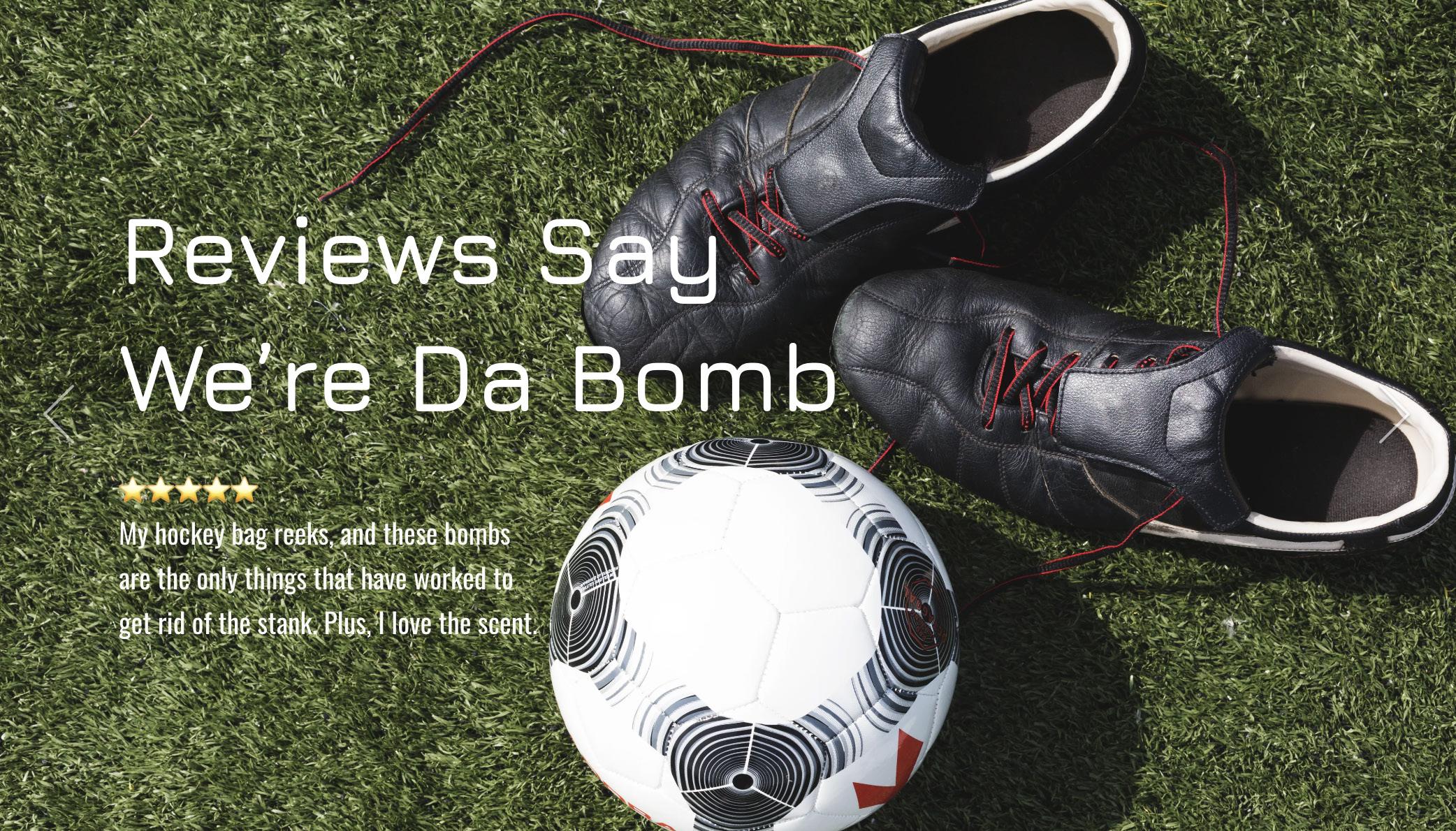
MacColl did not end up winning, but he nonetheless gained memories and experience from the competition.
“I still made some great connections with great people,” MacColl said.
“Pitching at nationals was surreal,” MacColl said. “I pitched my business in front of five hundred people. Lights were shining on me on the stage. It felt like I was in the Super Bowl.”
Since nationals, MacColl has focused on selling his product.
In late May, he received around fifty sample packages, which he gave to his early donors. MacColl spent the summer of 2024 building a strong social media presence.
At the beginning of the 2024-2025 school year, MacColl finally received his first full shipment, consisting of 2500 packages. He has already sold approximately 400 packages; 200 of those went to Director of Athletics Mr. Michael Murphy.
MacColl has also sold many of his packages to upper school students.
Fifth Former Samuel Putter loves the product.
“X-Stink’d bombs are great. I toss two in my sports bag and they take the smell out. Also, unlike other deodorizer balls, they actually smell good,” Putter said.
MacColl thinks Mr. Murphy may distribute the products to Haverford athletes. Whether you’re an athlete or just anybody who wants to kill stink, look out for James MacColl’s X-Stink’d Bombs.

Ian Rosenzweig ’25
“Ireally do think human beings are fundamentally meant to create things,” English teacher Ms. Emily Harnett said. “If everybody just at least once had an experience of trying to say something and feeling like you actually succeeded in spite of yourself, I think people would have more passion for learning because learning is sort of the beginning of any creative process.”
Sixth Formers read one of Ms. Harnett’s published essays, “Death and Emojis,” in English IV and English IV* classes. The essay is a natural fit in the courses’ themes of identity, legacy, and existentialism. It’s also an example of a multi-faceted narrative form, new to many Haverford students.
“Ms. Harnett’s piece is really doing the kind of writing that we want English students to aspire to, which is not just writing analysis of a piece of literature, not just writing about themselves, but combining all of those skills and doing all of it at once,” English Department Chair Ms. Taylor Smith-Kan said. “It’s a way more mature form of writing.”
In addition to introducing a different style, discussing a piece with the complexity and depth of “Death and Emojis,”while also acknowledging personal connections with the author, provides an opportunity for students to push their thinking.
“Whenever you all have a chance to talk to somebody who’s an expert in their area, I think it’s a great experience.”
MR. ANTHONY PARIANO
“Why does it speak to us? What is the subtext and what is the message being revealed?” Ms. Smith-Kan asks.
“Death and Emojis” is deeply personal. It discusses the passing of Ms. Harnett’s father, his grieving process, and her thoughts

on grief and self-expression.
“One of the comments that a student in my class this year made was just it’s so weird that Ms. Harnett is so dark in this, because she’s so fun and happy normally,” Ms. Smith-Kan said. That expression allowed Ms. Smith-Kan to highlight one of the benefits of reading the work of Ms. Harnett—or anyone one knows personally. “People have depth,” Ms. Smith-Kan said. “People are not one-dimensional.”
Ms. Harnett’s position provides English IV students a unique opportunity not only to know their author, but also to gain direct access to her. She visited two English IV* classes to discuss her literary choices and her writing process.
“Whenever you all have a chance to talk to somebody who’s an expert in their area, I think it’s a great experience,” English IV* teacher Mr. Anthony Pariano said. “We all are a part of this exceptional place where people do exceptional things. Acknowledging that is really important.”
Mr. Pariano referred to Ms. Harnett as “Harnett” in classes, giving her the same recognition as other authors in the curriculum.
“She’s a serious author,” he said. “It didn’t seem right to refer to her otherwise. The work is so good that it makes it easy to
compartmentalize those two parts of her.”
Although Mr. Pariano saw value in Ms. Harnett’s interaction with students, he also acknowledged that it was most important to ensure that Ms. Harnett was comfortable with the scenario. The intimate details shared in “Death and Emojis” are not necessarily those that a teacher frequently shares with students.
Ms. Harnett was excited to connect with students over her work.
“They would live rich and fulfulling lives if they made room for that feeling.”
MS. EMILY HARNETT
“At the end of the day, you write things in the hopes that they’ll be read,” she said. “If you write it and you publish it, you’re making an appeal for people’s attention. You’re saying that you think your work is worthy of that attention…And so if more people are
reading it, that’s awesome.”
Rather than feeling discomfort with the window students had into her private life, Ms. Harnett appreciates her work’s ability to foster new learning experiences.
“It does happen a couple times every year where a kid I used to teach will read that essay, and it will be helpful for him in thinking through something that he wants to do in one of his English-class essays,” she said. “That’s what my writing in this context should be. It should be something useful for you guys.”
Ms. Harnett’s visit to Mr. Pariano’s classes did not focus solely on the content of “Death and Emojis.”
“I think students were much more interested in [Ms. Harnett’s] life as a writer, and the process,” Mr. Pariano said.
To the fledgling upper school writer, “Death and Emojis”—and Ms. Harnett’s other published work—can serve as a promise of possibility.
“Being published was just a great experience,” Ms. Harnett said. “It was so thrilling and so confirming, and I just want every student to know that that feeling is available to them if they try hard enough and they care. They would live rich and fulfilling lives if they made room for that feeling.”
Benas antanavicius ’27
This fall, some upper schoolers will contend in the Wharton Global Stock Competition against a thousand other teams from across the world. This competition is run by the Wharton School of Business at the University of Pennsylvania, and the winners will gain free admission to their Global Financial Youth program.
This year, led by Global Financial Markets teacher Mr. Brian Long, the school has entered three teams.
Fifth Former Drew Carasco’s team has great ambitions for the challenge ahead. Carasco believes that diversity is the key to success.
“You need to have great teammates with lots of different skills,” Carasco said. “If you have a bunch of good writers on the team, you might end up writing really well, but then you don’t have other aspects of the team.”
With this in mind, Carrasco’s team of seven consists of Third Former Jack Collier, Fourth Formers Hugh Williams, Anantvir Othie, and Kevin Chan, and Fifth Formers Ranvir Gill and George Kanteliotis.
In the few years that Haverford has participated in this competition, a team has not yet made it to the semi-finals.
The winner is not decided by which team makes the most money, but rather by the process and the research behind each stock decision based on the scenario Wharton provides each team.
Carrasco believes that changes they are making this year could be the difference maker.
“Instead of trying to pick the best possible stocks that [we] think are going to do the best, [we will focus] more [on] meeting the actual needs that the employer wants,” Carasco said.
With a new hope and plan for winning,
the team has a solid chance of making the semi-finals this year. Members will focus on teamwork and putting together an awardworthy final product.
“A portfolio is better than its individual parts,” Carasco said.
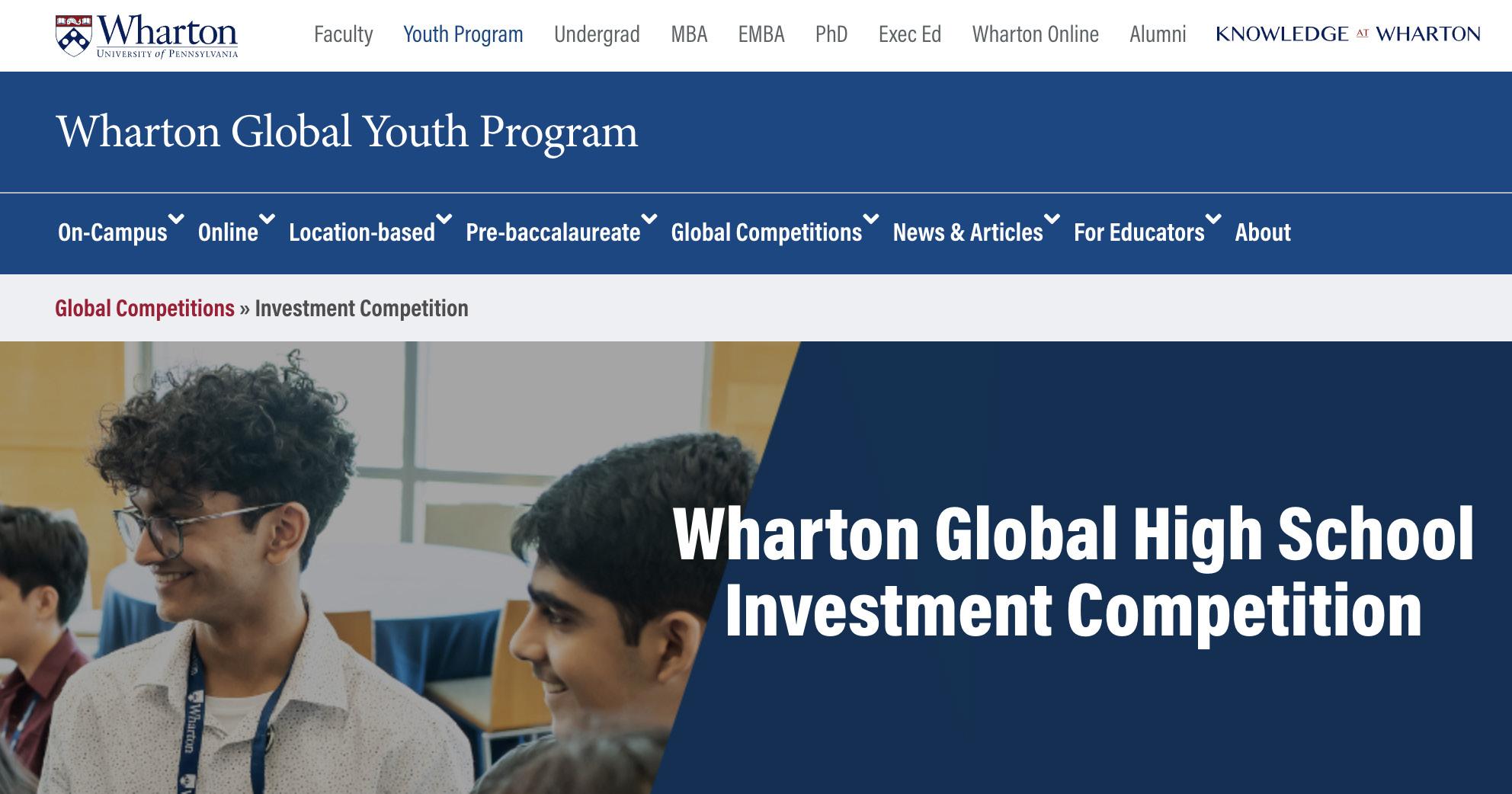
cont. from first page
Initially, the group planned on using a robotic arm to move the pieces.
“We started with an arm that rotated on two joints and used inverse kinematics to move to each square,” Ford said. “Pieces were picked up using an electromagnet and a pinion gear with a servo to make a linear actuator. The arm didn’t work because the weight of the electromagnet couldn’t be supported, so it toppled over.”
The team scrapped the idea, keeping only the electromagnetic piece grabber, before coming up with their final design. They used computer-aided design programs such as TinkerCad and Fusion360 to plan their work.
“The program went through a ton of iterations.”
JACK FORD ’26
“The electromagnet’s convenient to work with because we can send a computer signal to instantly turn on and turn off the magnet at any time,” Kelly said.
Besides powering the electromagnet, computer signals also control the entire robot. Ford programmed a custom chess library and paired it with Stockfish, an opensource chess engine, to create the robot’s AI.
“It was really challenging creating the software,” Ford said. “Integrating all parts of the robot, like reading board position, updating the virtual chess game, finding the best legal move, moving the machine, all in an efficient and accurate manner was really hard. The program went through a ton of iterations.”
Still, Ford’s hard work led to success.
“My favorite part of the robot is the way

we hooked it up to an external chess AI that Jack designed,” Kelly said. “All we need to do is input what move the human made, and the software does the rest. It makes a move on its own and moves the piece of the desired square with no further input.”
The design is not only an efficient chess robot machine, but also applicable to other aspects of life.
“It can be applied to different applications. For instance, by attaching a scalpel,
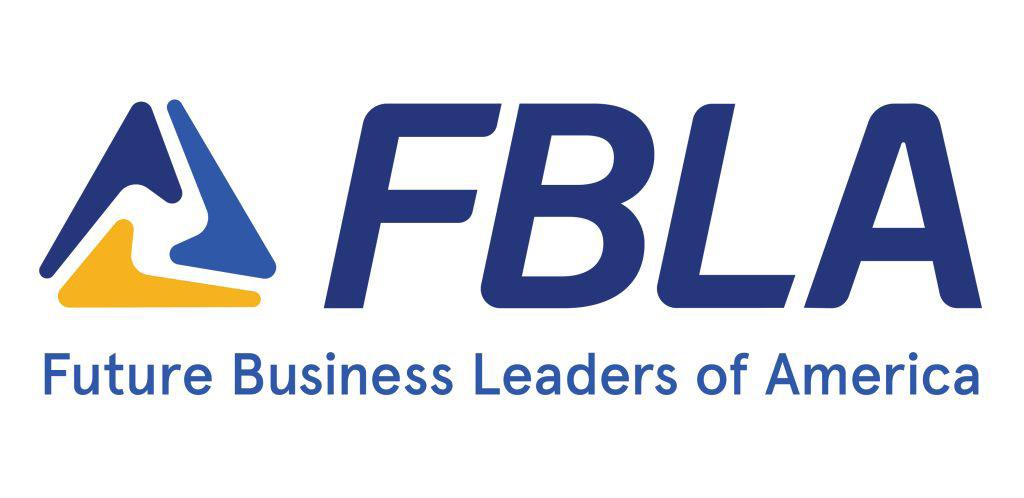
Future Business Leaders of America is dedicated to developing essential skills in all members
Ayush Varma ’27
Anew club has joined Haverford’s repertoire: the Future Business Leaders of America (FBLA). Led by Fourth Former Anantvir Othie, Fifth Former Ranvir Gill, and Science Department Chair Dr. Daniel Goduti, FBLA is a national organization that helps members develop essential skills through hands-on experiences, competitive events, leadership conferences, and community service projects.
By participating, students gain practical knowledge in areas such as entrepreneurship, financial management, and communication, making them well-equipped for future academic and professional success.
“At Haverford, FBLA will be treated as both a competitive and leadership organization,” said Othie in an email to the upper school.
Since its founding in 1940, notable leaders have been involved with FBLA, including Carly Fiorina (Former CEO of
Hewlett-Packard (HP)), Richard Riley (Secretary of Education under President Bill Clinton), and Johnny Isakson (Former Georgia senator).
“Along the way, participants will learn what it means to lead a group of talented individuals with the right skill set.”
ANANTVIR OTHIE ’27
In FBLA, “[Students will] compete in competitive events, including a variety of concentrations of business ranging from Financial Literacy to Parliamentary Procedure,” Othie said. “Along the way, participants will learn what it means to lead a
our robot could become a highly accurate medical device,” Ford said. “Or, by attaching a pen, we could use it to draw or replicate human handwriting.”
The team is proud of the product that a year of engineering produced.
“If you told me when I was a freshman that I would be designing and building a robot that played chess against you within four years,” Kelly said, “I would have never believed you.”
Ford echoed a similar sentiment.
“To anybody who wants to learn about engineering, programming, and technology, my advice is this: the internet is your greatest asset,” Ford said. “We live in an age where the average person has access to instant knowledge and education through a device in their pocket. If you’re able to use the internet, and have a desire to learn and understand complex ideas, you can achieve anything.”
Fifth Former Ranvir Gill, Fourth Former Anantvir Othie, and Dr. Goduti found new Future Business Leaders of America club
group of talented individuals with the right skill set.”
“We wanted to bring back what Haverford was well known for: public speaking and competitive nature.”
ANANTVIR OTHIE ’27
Around 35 students joined FBLA, making its debut one of the biggest in the school.
“What inspired Ranvir and me was the lack of national competitive business clubs and competitions at Haverford,” Othie said.
“We wanted to bring back what Haverford was well known for: public speaking and competitive nature.”
Because of the unique skills FBLA sharpens, the hope is that students will be better prepared to tackle real-world challenges, excel in their academic pursuits, and
develop a strong sense of community and responsibility.
“We strive to teach students life-long skill sets that will carve their path in the business world as they prepare for national events.”
ANANTVIR OTHIE ’27
Currently, Othie is focusing on the new club’s first steps.
“We need to establish ourselves in FBLA and find our footing... We strive to teach students life-long skill sets that will carve their path in the business world as they prepare for national events,” Othie said. “And our last goal is to win.”
With the new-school-year feeling fading away, students return to old habits, sports turn to InterAc league rivals, and clubs start up again. Many teachers and students would say clubs make Haverford special.
One of the most well known is Mock Trial, which meets twice a week for ninety minutes. Mock Trial members also gain a credit towards their two-credit sports requirement.
“We had a
ton of signups amongst new and returning students.”
CONNOR HANEY ’25
“We had a ton of signups amongst new and returning students,” Sixth Form leader Connor Haney said. “This speaks to the reputation that Mock Trial holds as a good way to get involved intellectually.”
Whether a student wants to pursue law in college or prepare for Fourth Form history’s WWI trials, Mock Trial provides students experience, preparation, and skills.
“Mock Trial is a unique club, in that the skills you learn are both directly translatable to your everyday life, such as public speaking and thinking on your feet,” Sixth Former Milan Varma said. “You also get an insight

into law, which is the backbone of our country.” Haney agrees.
“Most times you’re not saying something legal, you’re just practicing [speaking].”
CONNOR HANEY ’25
“The first thing is just public speaking in general. A lot of what we do at Mock Trial is just speaking,” Haney said. “Most times
you’re not saying something legal, you’re just practicing [speaking].”
One has to be interested in law to participate.
“There are a lot of things you can take away from it even if you’re not necessarily interested in becoming a lawyer,” Haney said. Even though Mock Trial has seen lots of interest, it has been challenging to maintain determined participants throughout the season.
“Last year, we found ourselves with tons of interest, which is great, but we were forced to withdraw from the state tournament due to a lack of participants late into the season,” Varma said. “To fix this issue, we’re bring-
ing back tryouts and creating a team that will stay engaged.”
The group leaders have plans to improve.
“One of the main goals is to have everyone more involved in the program,” Haney said. This, in turn, may lead to “winning, developing our guys, and growing relationships.”
Similarly, Varma said the team’s main goal was “creating a more streamlined team of dedicated students.”
The team has high hopes for the season ahead.
“It should be a great one,” Varma said.

Known for its past success, the 169 Cavalry robotics team frequently attends events and competitions in vastly different environments.
Among 169’s recent competitions was the Highlander Summit Event, where team 169Y—composed of Fourth Former Taha Obuz and Fifth Formers Ajay Chakraborty, James Friel, Jonny Wang, and Ranvir Gill— traveled to New Jersey to compete against 78 other teams.
“The nature of robotics competitions is that it’s a new game every year.”
MR. ADAM MYERS
“The nature of robotics competitions is that
it’s a new game every year, and [for] this game in particular, the rules have evolved several times already,” Robotics coach Mr. Adam Myers said. “At signature events like the Highlander, certain aspects are more complex than what we would see at local tournaments, where the level of competition won’t be as high.”
The preparation included a blend of engineering, building, and
coding.
Given a competition of this caliber, team 169Y had to prepare extensively.
“Leading up to the Highlander Signature Event, we prepared mostly outside of school. Because this event was early season, we had
to balance our schedules a lot more,” Obuz said.
The preparation included a blend of engineering, building, and coding.
Reflecting on the previous competition at the Mall of America in Minnesota, Gill said, “We took a week-long break, and then we started working on the actual robot and finished it a week before Highlander. Then we spent a week just straight coding.”
At the Highlander Signature Event, the team had much to handle.
“Going into it, we wanted to redeem ourselves and our performance at Mall of America,” Gill said. “We set realistic expectations and we met those expectations, if not exceeded them.”
While the team experienced some challenges and surprises, they did well, making it past the elimination rounds before narrowly losing to the first seed.
To 169Y, the Highlander event served as
a valuable experience.
“I met a lot of awesome people,” Obuz said, “and this event really helped me realize that we can win if we apply ourselves.”
Although not displaying the aspect of physical domination typically seen in athletic sports, the robotics team requires the exact same level of dedication and focus.
The school community can still make strides in supporting the robotics team.
“Come to a tournament,” Mr. Myers said. “What makes robotics unique is that it is a highly technical skill, and it is athletic in [terms of] the hand-eye coordination and the dexterity needed to operate a fast-moving machine and make… split-second decisions that winning a match takes.”
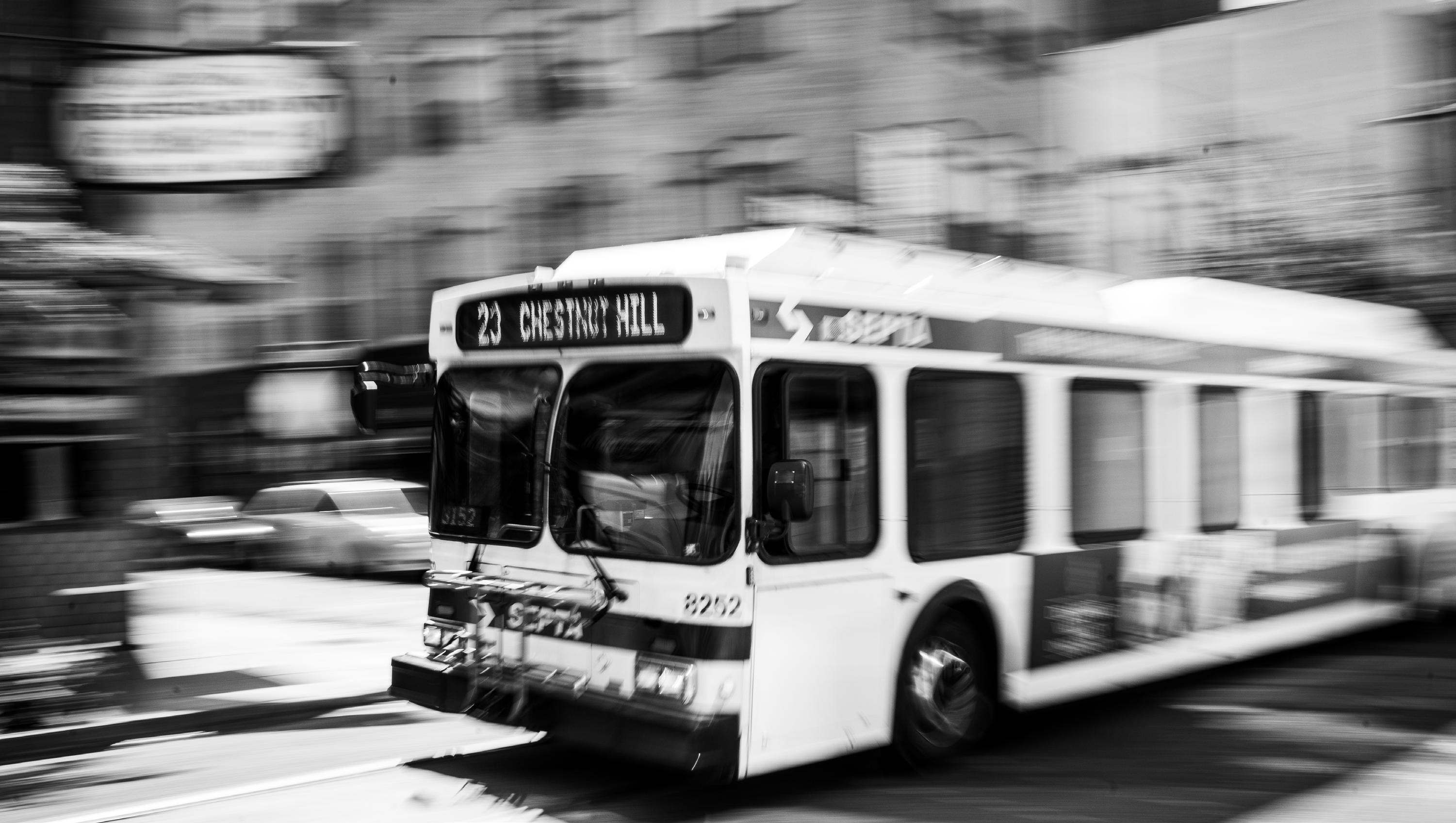
Adam Brown ’27
The United States used to be the world leader in railroads and public transit. Now, America values the car above all else, while other nations work towards more sustainable development.
America’s railroading history had its major start in 1827, with the Baltimore & Ohio Railroad (for the Monopoly fans out there, the B. & O.) linking the harbor of Baltimore to the Midwest. Due to advantages in speed and cost, railroads linked every major city in the American Northeast and Midwest by 1860. However, the system of railroads was much neglected past the 1910s, as automobiles and airplanes conquered markets.
...by 1906, twothirds of rail mileage in the U.S. was under the control of seven railroads.
The railroads experienced major hiccoughs in the financial panics of 1873, 1893, and the Great Depression. The years of rapid expansion led to overbuilding on many pieces of the network; by mid-1894, a quarter of all U.S. railroads had failed. Smaller railroads that failed were often absorbed into larger entities such as the Pennsylvania or New York Central railroads, and, by 1906, twothirds of rail mileage in the U.S. was under the control of seven railroads.
The beginning of the end for America’s vast railroads arrived in the 1920s. After WWI, the Interstate Commerce Commission’s regulations limited the profit and schedules of railroads, while automobiles, and eventually airplanes, emerged. Because of their near-unregulated status during the early 20th century, and the vast financial assistance given to them by the U.S. govern-
ment, the newer methods of travel quickly outpaced railroads. The majority of previously monopolistic railroads could not keep up with the competition, and Penn Central, a major company, declared bankruptcy in 1970.
As railroads and cities changed, so too have the ways people have used them. In 2024, public transit is primarily used to commute to and from school or work. However, many members within the school community have had mixed experiences commuting on public transit.
Sixth Former Davin Schulson rides SEPTA regional rail to and from school every day, and he has experiences some annoyances.
“Everything that can go wrong will go wrong,” Schulson said.
He mentioned that when he is on time to catch his train, it comes late, and when he is running late, the train seems to always arrive on time.
Recently, Schulson’s SEPTA train was stopped for nearly an hour in the same place.
“Something something Amtrak, something something fire,” Schulson recalled as to why. He commented that he was “saved” by Instagram reels.
In addition to public transit, many members of the Haverford community regularly travel by walking. Centennial Hall Technical Assistant Mx. Victoria Gill-Gomez walks, in addition to taking transit.
“You just get to see the city more [when walking]. I think it also calms you, getting off of a long day of work and walking home,” Mx. Gill-Gomez said.
However, many of Philadelphia’s suburbs are not walkable.
“Half the time you’re just walking on the side of a road, right next to cars. There’s a severe lack of sidewalks and crosswalks,” Schulson said.
The majority of suburban environments in the U.S., called “Suburban Sprawl,” were built for the automobile past the 1950s. Many aspects of urban environments were
bulldozed for the same purpose around the same period of time, one of the most notable examples being Houston, Texas, in the 1970s.
Zoning originated in New York City as a way to separate conflicting land uses, such as heavy manufacturing and homes.
Zoning laws play a large part in how cities and suburbs are built today. Zoning originated in New York City as a way to separate conflicting land uses, such as heavy manufacturing and homes. After WWII, zoning laws were extended to regulate many factors in cities and suburbs, including parking minimums, which often exacerbated the scale of places, making walking or riding public transit unreasonable.
In places that do have better access to transit, odd schedules can render the systems ineffective.
“Regional rail is about forty-five minutes to an hour recurring and then on weekends it’s every two hours, which is pretty inaccessible to work for a lot of people,” Mx. GillGomez said.
Riding public transit, especially in the U.S., can spark interesting encounters.
“I used to pick up the 125 bus on Market Street,” Physics teacher Mr. Maley said.
“Among some of the more interesting characters was an individual who sat next to me who appeared to have three personas. The first was expressed with an almost professorial lilt. For the second, he began making the loud, squawking sounds of a bird of prey, and in the third persona, he repeatedly asked me if I knew about ‘the dragon,’ even though until this point I managed to avoid eye contact.”
Mr. Maley bemoans the underlying flaws in America’s urban design.
“Effective public transportation has to work hand-in-hand with sensible urban planning,” he said. “For example, trying to maintain the medieval system [of] mixeduse, the kind of system that Jane Jacobs championed in The Death and Life of Great American Cities, will help support a public transit system that works for everyone.”
As car-dependent design directly leads to the death of over forty thousand people in the U.S. by accidents annually, and eight million worldwide from fossil fuel emissions, many citizens advocate for a more sustainable future.
“We need to understand that cars are not going to improve our lives, at all,” Mx. Gill Gomez said.
Both Schulson and Mx. Gill-Gomez have noticed a large benefit of public transit: the community which forms within it.
“Sometimes you see the same people every morning because you’re all taking the same commute, which is pretty nice,” Mx. GillGomez said. “There is that kind of community aspect.”
Mr. Maley said, “I went on the 2009 and 2012 China trips, and the train conductor apologized to us for being a minute late. Compare this to the 23 bus when I lived in South Philadelphia, where you never knew if it would even show up at all.”
Mr. Maley again referenced the area in New York in which Jane Jacobs, the author of The Death and Life of Great American Cities lived.
“[An] ineffective public transportation system inordinately impacts both the poor and the working class. Gentrification in cities exacerbates this problem. The irony is that Jane Jacobs’ modest row home in Greenwich Village is now going for 9 million,” Mr. Maley said.
James MacColl ’26
The Philadelphia 76ers’ lease at the Wells Fargo Center ends in 2031, and the team believes it is in their best interest to build a new facility located at Market and Filbert Streets and 10th and 11th Streets—next to the heart of the city’s renowned Chinatown.
The $1.3 billion arena has been approved by Mayor Cherelle Parker, who said that the city and the Sixers have “reached an agreement,” and that building a new stadium is one of the “best financial deals” ever approached by a Philadelphia mayor.
The thought of a revolutionary sports arena appeals to many, but it comes at the cost of one of Philadelphia’s most vibrant and eccentric communities. Built just one block away from the gates to Chinatown, the large crowds that the Sixers attract weekly would undoubtedly interrupt the lives of Chinatown residents. 69% of Chinatown residents have rejected the stadium proposal, and only 18% agreed to proceed when surveyed by WHYY.
The city plans to offer a $50 million Community Benefits Agreement, reimbursing surrounding neighborhoods and Chinatown. However, critics say no amount of money would restore Chinatown’s charming cultural identity.
Haverford has a unique connection to the lives of those immersed in Chinatown culture. Every year, Second Form students in Middle School travel to Chinatown and experience a full day buried in its unique and fascinating culture. Experiences like these may be hindered by the large crowds that sports stadiums attract. A once-animated and spirited town might become another ordinary block in downtown Philadelphia.
“I believe that the Wells Fargo stadium is just right.”
JAMES FRIEL ’26
Fifth Former James Friel has been an ardent Sixers fan for his entire life, claiming that building a new stadium is “unnecessary” and “inconvenient.”
“I believe that the Wells Fargo stadium is just right. It is in seemingly great condition, and I have no issues with it,” Friel said.
“The current stadium has an unmatched and historic atmosphere with great concessions. By no means should we get rid of something that special.”
Friel mentioned that the Wells Fargo con-
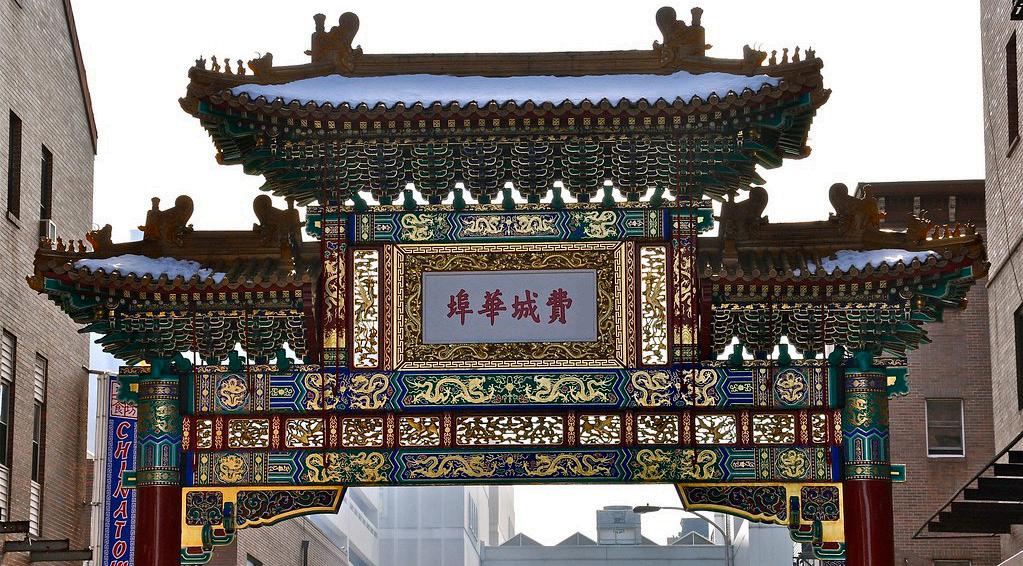
cessions are some of the best parts of the stadium life, and they are certainly at risk if the team moves stadiums. Working labor unions of the Wells Fargo Center have voiced their opinions, claiming that the move will “drastically affect their lives” and it will put their careers at “high risk.” Nobody wants to see their favorite concessions go to ruins, but a move to the inner city would cause definite harm to those running the concessions.
Fifth Former Nate Gill believes that a new stadium move would an “amazing” addition for the Sixers franchise, believing that it is far enough away from Chinatown that it won’t
have any direct impact on their community.
“Parking would be the only major issue,” Gill said. “Besides that, I think it would be quite the upgrade from the current Wells Fargo Stadium.”
Fifth Former Avery Paul shares a much different sentiment on the stadium move, saying that it “isn’t a good idea because it ruins the Philly dynamic,” and because it “takes away from the convenience of having all of our sports stadiums right next to each other.”
Byron Yang ’28
“What did you do over the summer?” For many students, the answer is automatic: “I went to the Jersey Shore.”
Rivaling the Jersey Shore’s famous beaches and boardwalks is the infamy of Jersey Shore traffic.
With traffic congestion during peak travel times on highways such as the Atlantic City Expressway (ACE), the average Philadelphian spends much more than the drive’s hour or hour-and a-half, stuck in bumperto-bumper traffic.
This ritual has existed for so long that many students and families have created their own ways of dealing with shore traffic.
Third Former Alek DeLeo believes the key to an enjoyable trip is to drive during off-peak hours. “Most of my drives were pretty easy due to driving late at night,” DeLeo said. “Normally the worst times to drive to the Shore would be either on Fridays or before and after holidays, like Memorial Day.”
“Leaving really early in the morning or going later in the evening can help.”
DEAN HAN ’28
Third Former Greyson Heneks said, “Go on a Monday because everyone usually leaves then. Going on Thursday night will also save you tons of time, since you don’t have to worry about traffic congestion.”
“Leaving really early in the morning or going later in the evening can help,” Third Former Dean Han said. “My family and I usually get there around 8, and it’s not too busy.”
It seems like shore traffic is unavoidable if you want to spend time at the beach, so what is currently being done to address this problem, and what could be done in the fu-
ture?
The South Jersey Transportation Authority (SJTA) currently plans the Preliminary Engineering Phase of widening the ACE—adding a third lane for its entire length. Adding an additional lane will certainly reduce congestion, but the project is not set to start construction until 2028.
There are many other initiatives to reduce overall traffic. One is to use New Jersey’s public transportation system. According to NJ TRANSIT, public transportation is one of the greatest mitigators of traffic on NJ roadways, reducing the miles traveled by 1.5 billion annually. A round-trip express bus ticket fare between Philadelphia and Wildwood is $34.50 and $37.95 between Philadelphia and Cape May.
High Occupancy Vehicle lanes, which encourage carpooling, are a relatively old proposal to address traffic congestion. Carpooling can reduce the number of cars on the road: according to AAA, roughly 90% of people from the Philadelphia area travel by car.
So, what can ultimately be done to alleviate the ACE’s intense traffic? Expressway expansion and transit creation.
“Maybe if more roads were added so that more cars can get in and out of the shore easily, [traffic would be lessened],” Han said.
Widening lanes and expanding networks would help the traffic situation.
Widening lanes and expanding networks would help the traffic situation on the ACE by having more space to drive, but NJDOT should create a more immediate solution, such as adding a direct train route from 30th Street Station similar to Amtrak’s Acela service.
An extension of New Jersey Transit’s Jer-
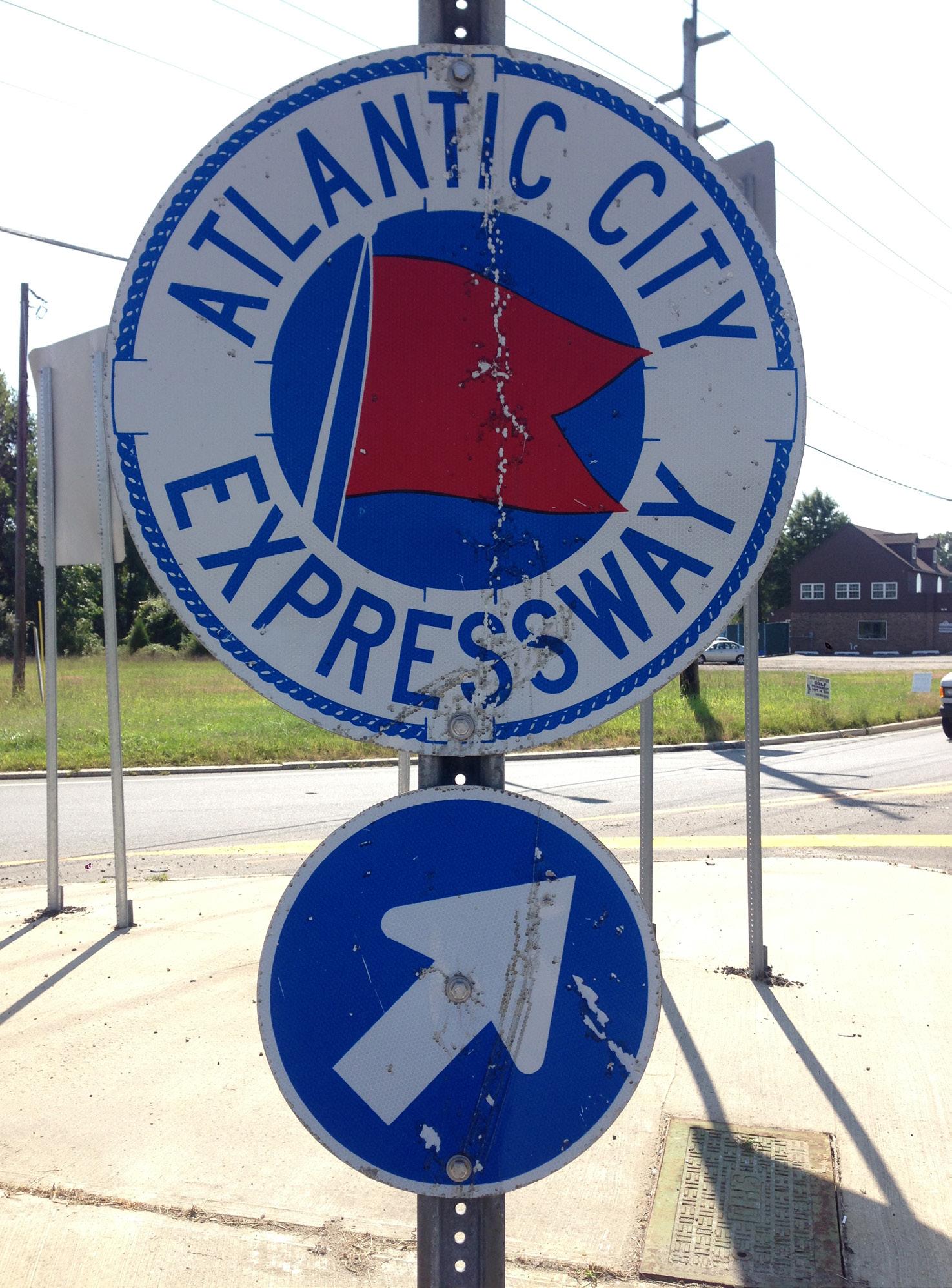
Atlantic City Expressway sign
sey Coast Line from where it currently terminates, Point Pleasant, to Cape May, could also alleviate traffic along the whole coast of New Jersey in addition to the ACE.
A final solution may come in the form of another expressway to create an al-
ternative route to the beaches. All three options would benefit in the case of an emergency, such as a hurricane. Nonetheless, all proposed solutions require funding and agreement in order to be completed.
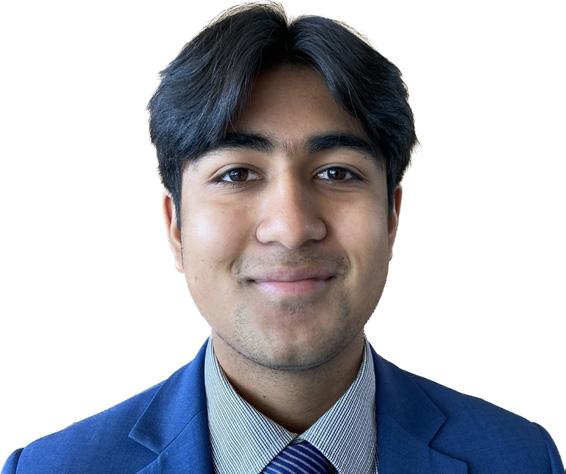
On Tuesday, November 5th, the United States of America is set to hold an unprecedented Presidential election. As Republican Candidate and Former President Donald Trump and Democratic Nominee and Vice President Kamala Harris vie for public support to their respective campaigns, citizens around the nation, and even the world, start to feel the effects of this tumultuous time. My own social media feed is filled with ads and other clips from debates and interviews with these candidates. To many, this material can cause division, as perspectives are shifted by algorithmic focus of information.
According to The Carnegie Endowment for International Peace, “Some scholars claim that Americans are so polarized they are on the brink of civil war.” Polarization is not inherently a bad thing. However, when perspectives naturally differ, it is imperative to prioritize discussion to stay united as a community.
At Haverford, civil discourse is a priority. From Fifth Formers in US History delving into the inner workings of our government to the Harkness Discussions in all levels of English, Haverford has implemented mediums for conversation and dialogue.
Often seen as a paragon of open discussion, the history department and US History teacher Mr. Timothy Lengel in particular have worked to curate spaces for understanding outside of the classroom. After attending one of the Middle Eastern history sessions last year, I was surprised at how helpful it was for my own understanding, as well as how information can be skewed by biased sources. Critical to understanding this election are our unprecedented circumstances.
“We have happened to live in an era of political polarization that is probably unlike anything we’ve seen since the 19th century. We’re living through what is called party realignment. There are certain times when the party structure fundamentally ruptures and shifts,” Mr. Lengel says. “The Republican party, in particular, is fundamentally changing its attitudes on policy and attracting different kinds of voters. Part of this story is that we’re living through a storm, and we
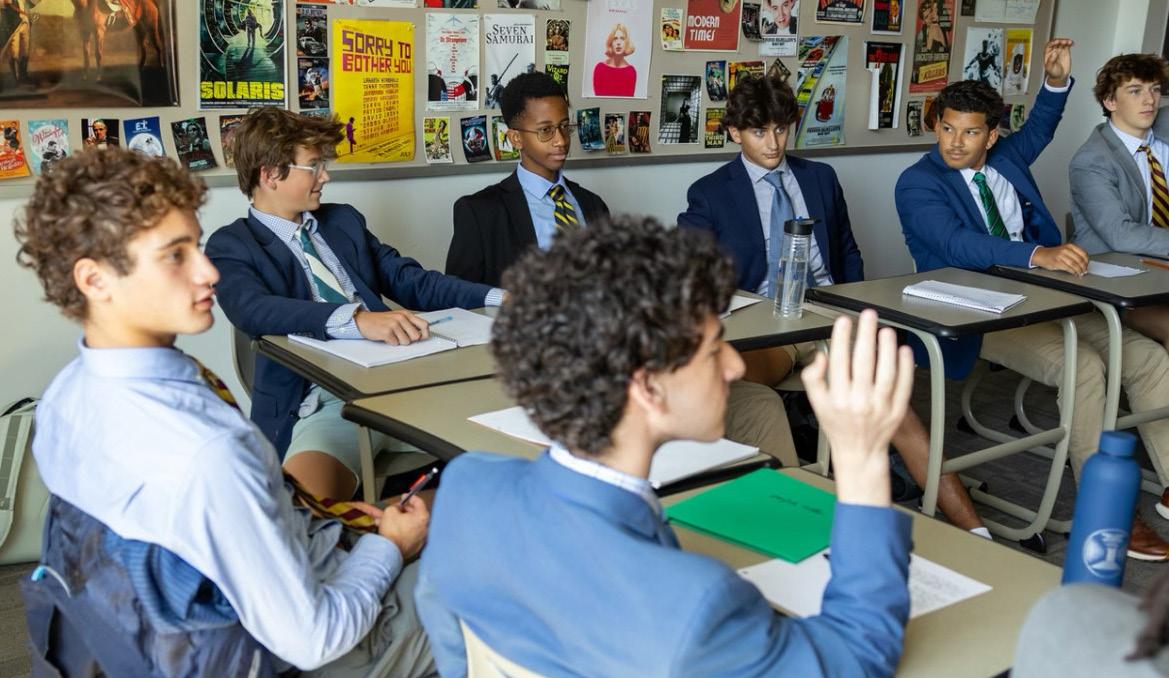
don’t know where the tornado is going to drop the pieces.”
History Department Chair Ms. Hannah Turlish expands on the presence of civil debate and misinformation in the country.
“One of the things kids said after the Vice Presidential debate was how nice it was. And I see that as an improvement, but it’s tricky when we have these civil conversations,” Ms. Turlish says. “Everyone’s calm and no one’s calling names, but if someone says something that’s poorly informed, it gets tricky. I can’t let it ride as equal to something with evidence, so I have to point that out. However, I have no control over how people perceive that.”
By prioritizing facts and evidence over preconceived notions, we can create spaces for the back-and-forth that is so integral to discussion. In this way, understanding is key. The previous year, with the initiation of the Israel-Hamas conflict, discussions and history lessons were held in Mr. Lengel’s room, open to all. Even this year, a similar experience was organized by the department regarding the election.
“It’s my contention that all students are going to grow up to be citizens in a free country and that you need training on how to be democratic citizens,” Mr. Lengel says. “And a large part of that is participating in civil discussion and asking questions.”
Mr. Lengel’s words resonate particularly with those in this community who are still finding their way and what views they identify with. For me, political identity is complicated, as some topics pull me in one direction, and others in a different way. This is most definitely true for many at Haverford, demonstrated by the large number of independently affiliated students in the Haverford Assembly the previous year.
“Trying on identities and asking, ‘what fits? what do I believe?’ is particularly important,” Mr. Lengel says. “These are big questions to answer, and I have long argued that it’s very important for the citizens of the United States, broadly speaking, but a young man at Haverford in particular to have areas where they can ask these questions. I think the school needs to foster and provide those.”
Head of School Mr. Tyler Casertano in-
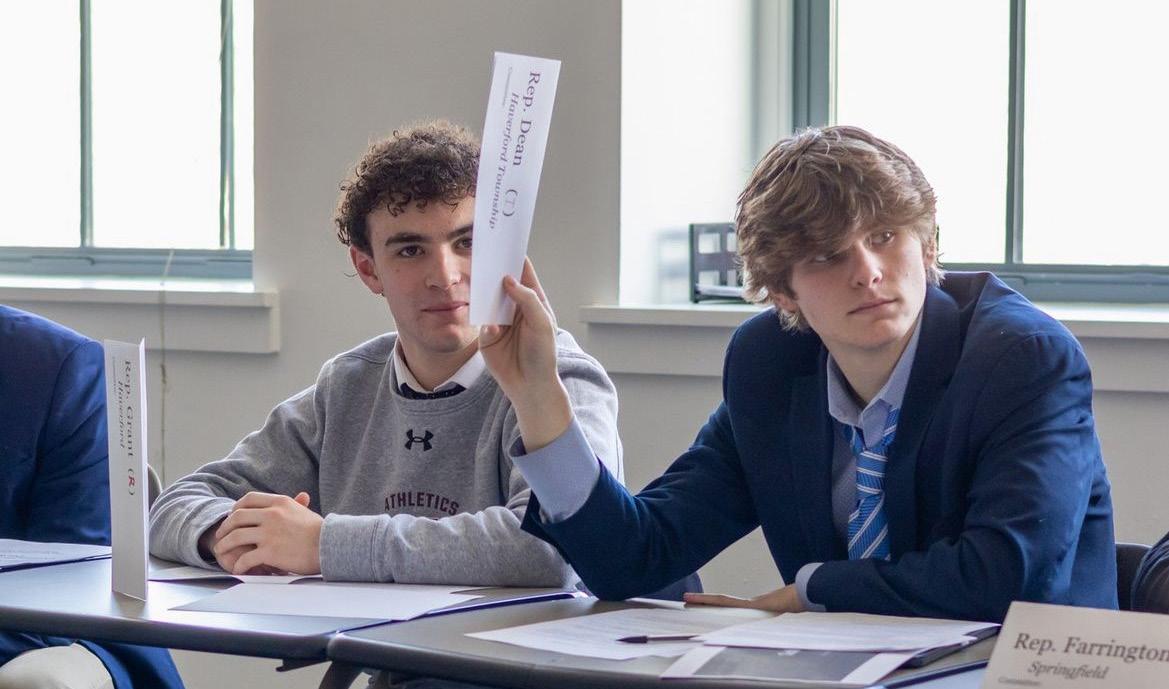
corporated similar comments into his words after Ms. Rhonda Brown’s DEI assembly on Monday, September 30th.
“What prompted my words then was Ms. Brown’s Reflection on Haverford being a place where people with different backgrounds, interests, and personalities, can come together to form a ‘fellowship,’” Mr. Casertano said. “I reminded the upper school that when we are at our best, we are a place that has a shared identity and experience that allows us to see our differences not as points of division, but as strengths that allow us to be wiser and more dynamic and that give us a greater understanding of humanity.”
Mr. Casertano points to the broader implications of division in our country.
“This is something our country and the world really struggle with. We tend to build those walls around people who have similar worldviews or experiences, and often demonize people who are behind other walls,” Mr. Casertano says. “We are not immune to that at Haverford. Given the central role that Pennsylvania will play in the election, we can’t allow those messages we’re hearing over social media to impact the fellowship that we have here. It will take some work and vigilance to make sure that doesn’t happen, but I have all the confidence in the world that we can and will do that.”
In this sense, the Haverford virtue of the year could not play a more vital role. As a student council member, I can affirm that this virtue was intentionally chosen with the purpose of unity and conversation in mind during the trying times that will be now until New Years, and potentially beyond.
“Humility is the center of that distinction,” Mr. Casertano says. “A conversation for understanding begins with the acknowledgment that the person you’re talking to has the capacity to provide insight you haven’t seen before or information you haven’t considered before. If we go into conversations believing that it’s a competition, we are only going to hear the points that are made through a narrow context, and it creates a defensiveness and a set of walls, whereas humility creates bridges.”

As the first month of the school year came to a close, Third Formers embarked on a two-day trip to Camp Saginaw. Over those two days, we participated in a variety of activities alongside Sixth Form leaders, fostering a sense of brotherhood and community.
After an hour-long bus ride to Oxford, Pennsylvania, we arrived at the camp, disembarked, stored our bags, and met our cabinmates. We then gathered, eagerly awaiting to find out who our accompanying Sixth Formers would be and what activities we would participate in.
As the games began, many students found excitement in activities from dodgeball to pickleball to the exhilarating ropes course and zipline.
I particularly enjoyed pickleball and the zipline, both of which brought out a sense of adventure and competitiveness.
I particularly enjoyed pickleball and the zipline, both of which brought out a sense of adventure and competitiveness.
These activities didn’t just make the camp fun—they also helped us build connections as a community.
We also participated in team-building
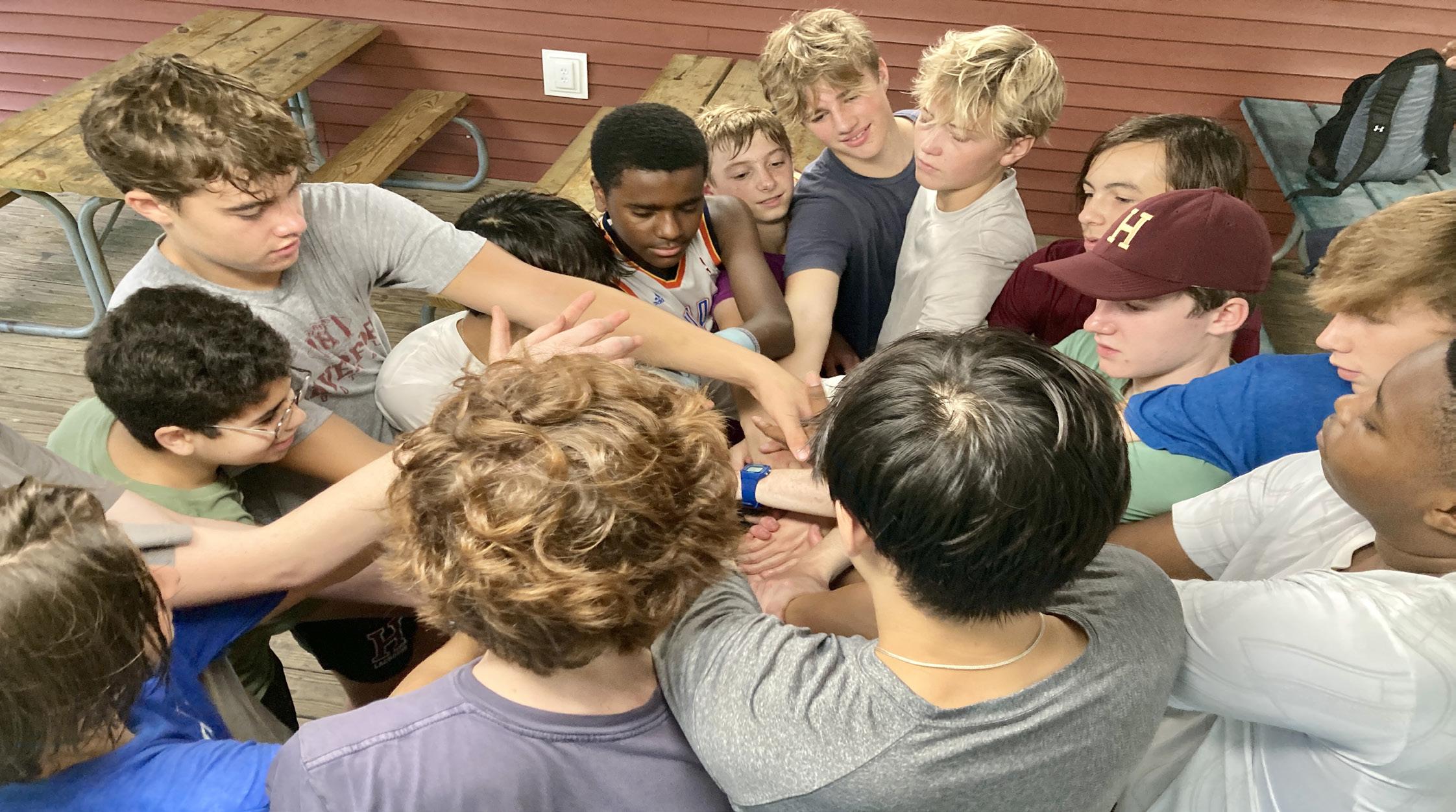
A group of Third Formers test their teamwork skills at Camp Saginaw
exercises, like turning a tarp over while standing on it, keeping a yoga ball in the air, organizing birthdays without speaking, or finding something that we all had in common.
The most memorable activity was the afterdinner bonfire.
As night fell, we ate dinner together in groups and participated in a “Thursday Night Live” trivia activity.
The most memorable activity was the
after-dinner bonfire where Third Formers heard from Student Body President Josh Williams ’25 and other Sixth Form student leaders. They spoke about their experiences and passed on lessons learned.
Listening to the fire crackling and the words of the Sixth Formers, I felt the weight of their stories: these were words to live by for the rest of our years in the upper school, and possibly even for the rest of our lives. These words told us to lean in, to never give up, to support each other in times of need, and to realize the importance of brotherhood.
After a few hours’ sleep, we awoke on Friday with rejuvenated spirits. As noon
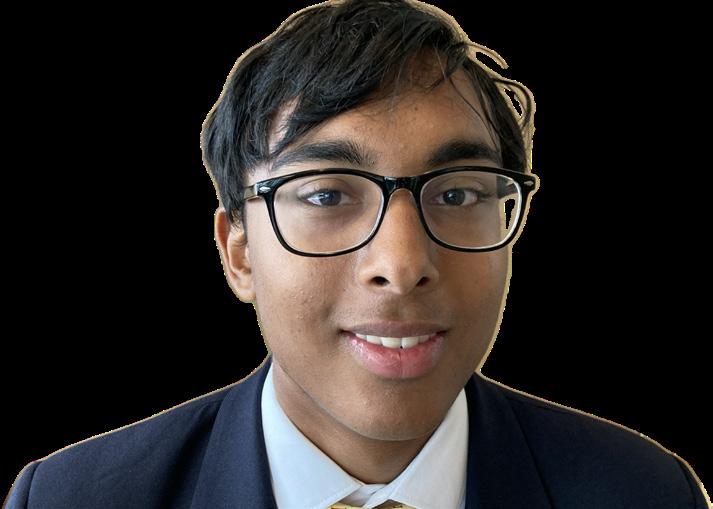
Technology is ubiquitous: from our Alexa alarm waking us, to Bluetooth-enabled toothbrushes monitoring our dental hygiene habits, to our Apple smartphone and watch guiding us to our daily school timetable.
Our recreation is fueled by gaming computers and virtual reality goggles.
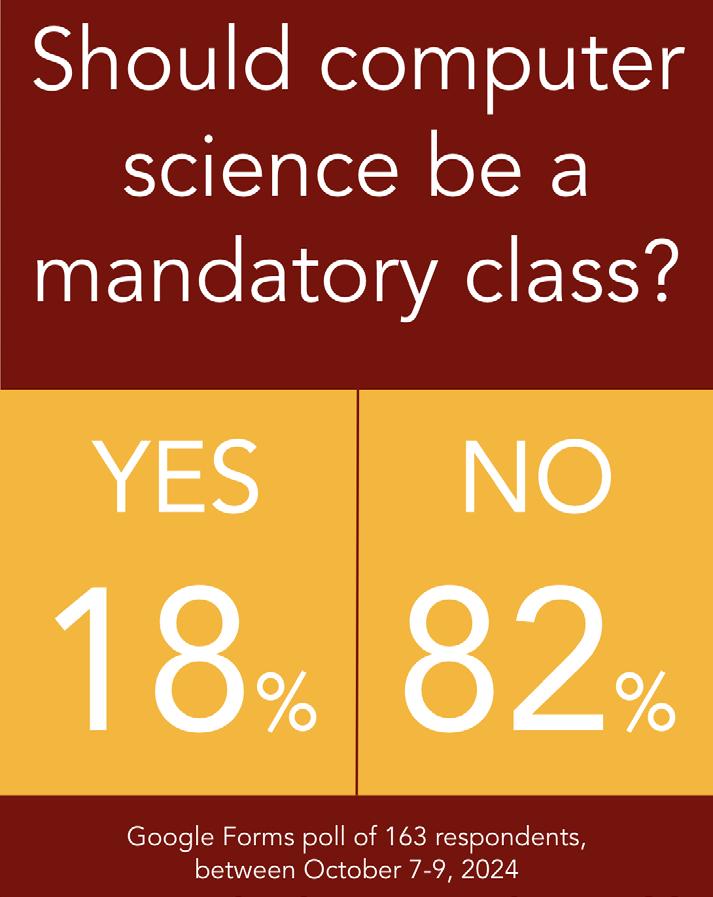
In the modern world, computing capability and knowledge may be as important as reading, writing, and arithmetic.
Our school was established during an industrial engineering revolution, with the machines, trains, and automation of many tasks. It was also when Ada Lovelace, daughter of Lord Byron and the mother of machine programming, developed her mathematical algorithms.
Haverford has always been at the forefront of scholarship and advancement.
Haverford has always been at the forefront of scholarship and advancement; however, we seem to have slowed down in embracing the computer science revolution.
Given the increasing significance of technology in every job sector, making computer science a compulsory course in high school could benefit students and future society.
English is a key subject in school, but it doesn’t necessarily mean you will become a writer; it will teach you how to speak, write, and understand your country’s language.
A similar truth is present in computer science, where basics taught at a young age can help the future generation be aware of their online presence and understand how their electronic devices work.
Ultimately, a basic understanding and
came, we ate lunch and listened to a closing speech from the Head of Upper School Mr. Mark Fifer, Third Form Dean Ms. Brooke Kenna, and Dean of Students Mr. Luqman Kolade.
We all took something away from the Saginaw experience.
The thrill of the adventurous activities, the messages of the Sixth Form speeches— these have not only impacted the Third Form, but our school’s community as a whole.
Camp Saginaw wasn’t just any trip—it was a memorable, influential experience.
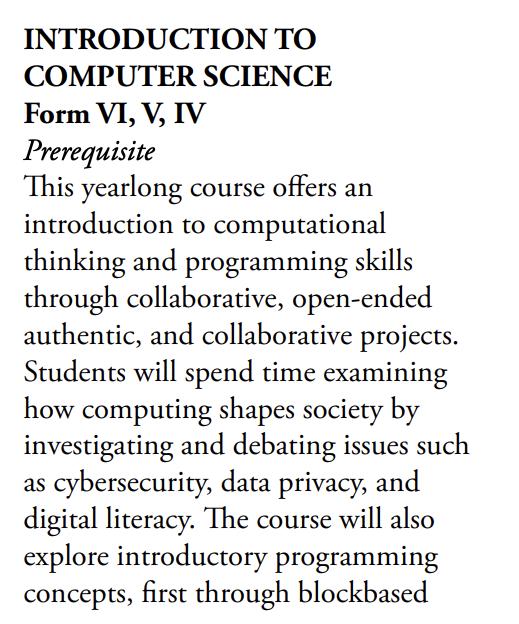
An excerpt from the 2024-25 course catalog describing the computer
ence course
application of algorithms, data analysis, and programming will equip the Haverford graduate with skills that can be applied to whichever career path they may follow.
The elite athlete could apply computer science to track and enhance his performance, the future film producer would utilize the skills to transform the cinematographic experience, and the future medical
doctor could harness technological capabilities to enhance human health.
Computer science is the most integrated of all subjects, incorporating math, physics, chemistry, language, engineering, creativity, art, and design. I argue it is the most important subject to master and should be compulsory for all students.
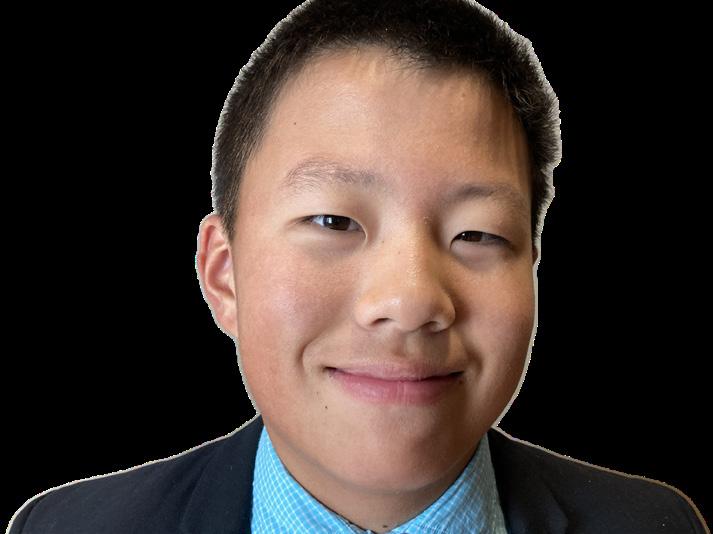
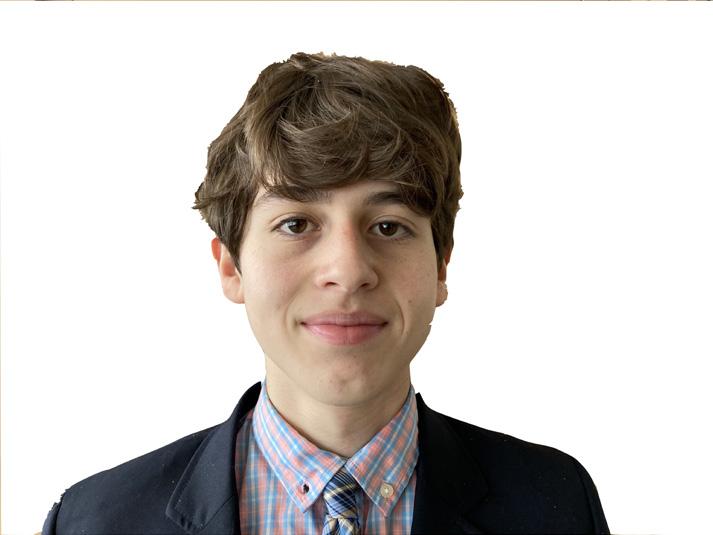
AThe Third Form trip to Camp Saginaw, meticulously planned by Third Form Dean Ms. Brooke Kenna, was action-packed. From zip-lining and ropes courses to community time with DEI Coordinator Ms. Rhonda Brown, every moment seemed to bring the Third Form together in new ways.
The Third Form grew noticeably closer as a class while also learning from Sixth Form leaders.
The Third Form grew noticeably closer as a class while also learning from Sixth Form leaders. Here are two perspectives on the trip:
As a Third Former, the thought of going into my first overnight school trip was nerve-racking. Although Camp Saginaw looked very pleasant and enjoyable from the pictures on the website, the thought of being at a summer camp in the middle of September was not something I was looking forward to.
Not having my phone didn’t help the cause.
Even though it seemed like these two days were going to be trying times, I tried to keep the negatives aside and find a positive outcome.
The bus ride was filled with anticipa-
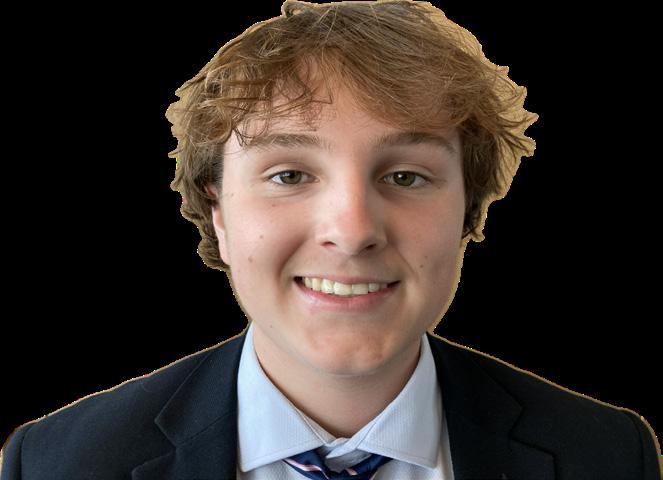
tion. I was nervous about sharing a cabin with thirteen other kids, and having a bad activity group without many of my friends. At the same time, I was also excited to grow closer as a class and make new connections with people I might not have been as close with.
One of my favorite parts was the zipline. Looking up at that tall green tower terrified me. I’m usually not scared of heights, but the thought of climbing a ladder that high off of the ground was daunting. The zipline made us get outside of our comfort zone, which strengthened our bond as a group.
After dinner we all sat around a blazing campfire together.
Sixth Form leaders shared sentimental stories about their time at Haverford, which I know we Third Formers appreciated. Every Sixth Former had something meaningful to say and showed how much they trusted us as a grade and how much they love and trust the school community.
From my perspective as a Third Former, Camp Saginaw was one-hundred percent a positive experience. This trip helped me feel more included in the Haverford community. Overall, I had a great experience growing closer with my classmates and teachers.
I can say with full confidence that after Camp Saginaw, I have grown as a leader, as a friend, and as a person.
Speaking as Sixth Form senior leader on

the trip, I found that Camp Saginaw gave me the chance to connect with a lot of the Third Formers. I was impressed with how solid the younger guys are. They have a lot of potential, and I’m confident that Haverford’s future will be in good hands.
One unexpected benefit of the trip was the chance to also connect more deeply with my fellow Sixth Form leaders. Because of COVID restrictions at the time, our class never had an overnight trip.
Hearing stories from other Sixth Form-
ers at the bonfire was definitely a highlight. It made me reflect on how lucky I am to be a part of the Haverford community—a feeling I wish I had recognized earlier.
My hope is that Third Formers are able to appreciate each other from the start because time at Haverford moves fast.
Standing by the fire, I was really able to recognize how easy it is to take Haverford for granted until you’re looking back at it.


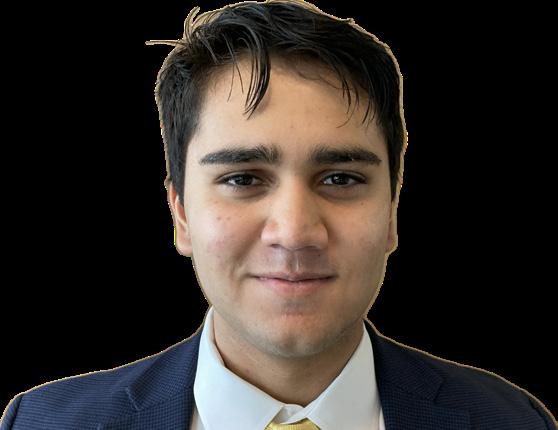
Debates are essential to an election cycle, especially at the presidential level. Since the presidential ticket was set as Donald Trump and J.D. Vance versus Kamala Harris and Tim Walz, two debates have occurred. These debates stand in stark contrast, one an immature squabble and the other a productive discussion.
Both Former President Donald Trump and Vice President Kamala Harris were extremely underwhelming in the presidential debate that took place on September 10th.
The moment that will forever define this debate is Trump’s statement “They’re eating the dogs,” when referring to Haitian migrants in Springfield, Ohio. This was a baseless claim that seemed unprofessional, immature, and bigoted.
Sixth Former Charlie Noble said, “I think [Trump] says whatever he can to get his fanbase riled up. He doesn’t really care who he’s hurting and just wants to throw someone under the bus. Whether it is Haitians, Latin American immigrants, or so on, it doesn’t really matter to him.”
“He says bigoted things, as he needs to appeal to the extremists who like him,” Fifth Former Desmond Heneks said.
“He seems less mature than past presidents like Joe Biden and Barack Obama,” Fifth Former Seth Virmani said. “It did show during the debate.”
There were also other weak moments for the former president, such as his statement “I don’t have a plan, I have a concept of a plan.”
These all culminated in a rough showing for Trump. According to CNN Polls, he was considered the loser of the debate by 63% of viewers.
Noble said, “I think Kamala Harris
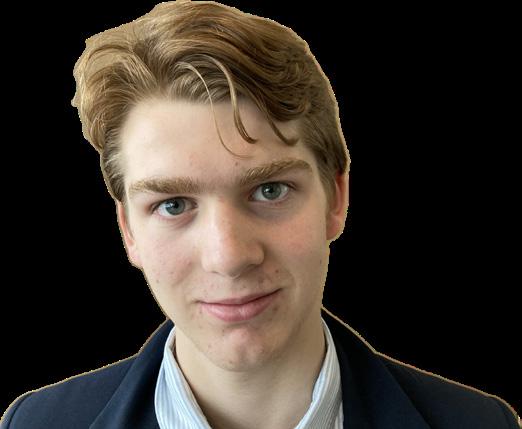
One of the major factors that differentiates this upcoming election from the previous one is the eight million members of Gen Z who are now eligible to vote, bringing the total voting power of this group to just under fortyone million. To address this new electoral variable, the two presidential candidates have resorted to utilizing “trendy” rhetoric and tactics in order to connect with young voters.
Although both Donald Trump and Kamala Harris have adopted this strategy, the audiences they are conveying their messages to are polar opposites.
Trump consistently polls higher with young men than women, while the opposite phenomenon is true for Kamala Harris.
“Trump’s messaging really resonates with younger men in a way that Kamala Harris really doesn’t,” says Fifth Former Joseph Kahana.
had the better performance in the debate. [Trump] took the bait on almost everything she tempted him with. A prime example of this is his tangent about crowd sizes after Harris brought it up once.”
Heneks agreed. “They were both trying to get under each other’s skin, and Harris did a better job of that,” he said. “She had a good strategy to win the debate, and it worked.”
However, Kamala Harris also had flaws in her own performance. She dodged questions, lied many times, and was bailed out by the clearly biased moderators many times.
Virmani said, “[Harris] kept stating that she was from ‘a middle-class family,’ which may be true, but it doesn’t mean anything when she wears a $60,000 necklace to the debate. I felt that she was also using this phrase to avoid tough questions about her policies.”
“The presidential debate was extremely entertaining, but unfortunately that’s all it was.
GREYSON HENEKS ’28
“She brought up Project 2025 numerous times, and she claimed that it was tied to Trump,” he added. “However, there is no evidence of this, and Trump has never said anything endorsing or commending Project 2025.”
“Harris definitely had a lot of help from the moderators,” Heneks said. “They asked Trump much more probing questions and talked to him in a derogatory tone, while Harris received none of this treatment.”
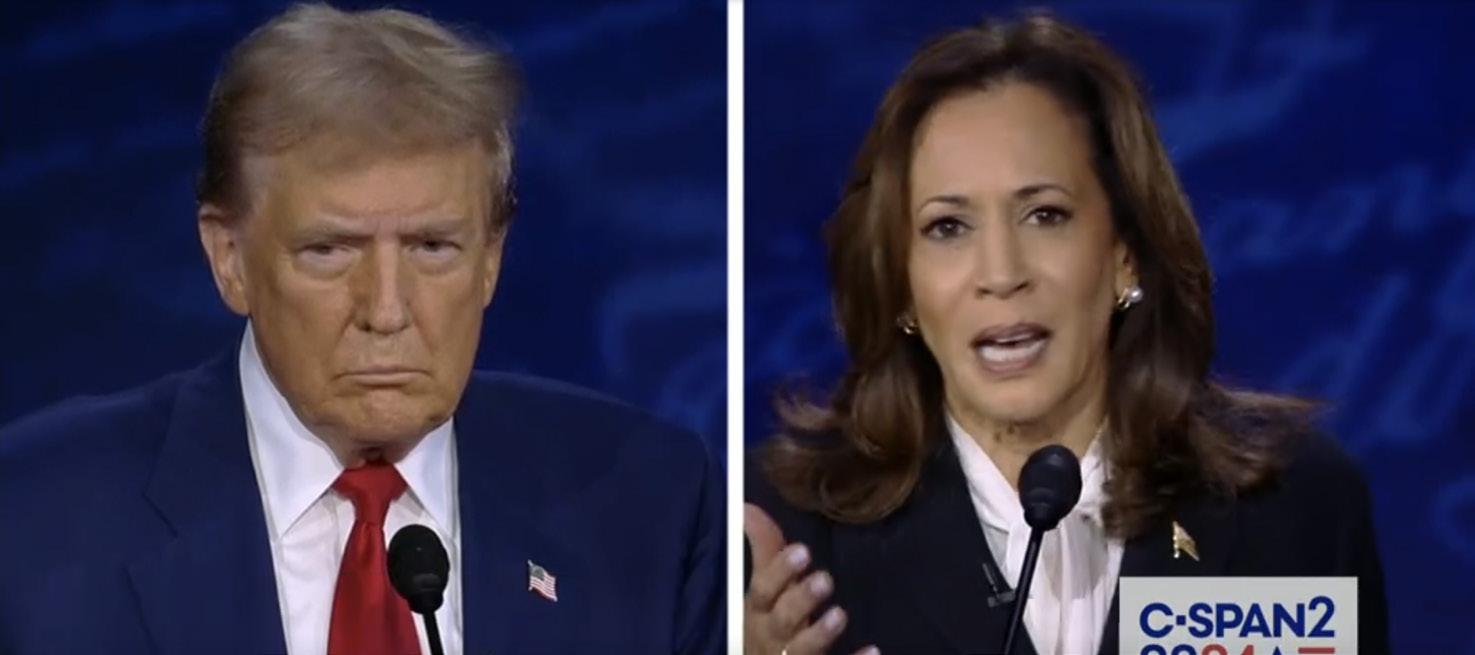
This debate was one of the worst presidential debates that the country has seen. Both sides lacked substance. Additionally, it felt at times that the debate was meant for entertainment, and wasn’t meant to be taken seriously.
“The presidential debate was extremely entertaining,” Heneks said. “But unfortunately that’s all it was.”
Meanwhile, the vice presidential debate
The two men treated each other like gentlemen, comparing and contrasting their policies and values.
between Ohio Senator J.D. Vance and Minnesota Governor Tim Walz on October 1st was a reminder of the more civilized debates of the not-so-far-distant past. The two men treated each other like gentlemen, comparing and contrasting their policies and values.
This debate was important for Senator Vance. His approval ratings before the debate were low, as people considered him extreme and unlikeable. However, he made himself seem more human and more relatable.
“I think Vance should be considered the winner of the debate simply because he rewrote his reputation,” Noble said. “The Harris campaign and legacy media both constantly slandered him, without giving him a platform to defend himself. He showed that he was incredibly articulate and has reasonable policies.”
“Although both had one or two slipups, they both had a really strong showing,” Virmani said. “It was similar to the Obama versus McCain debates, where both sides were calm, civilized, and articulate.”
Haverford students must watch the debates and understand the vast differences between them. The presidential debate represents American division at its worst, while the vice presidential debate represents American ideals of respectful debate at its near best.
Trump frequently goes out of his way to do things that specifically pander to male audiences, such as attending wrestling matches and appearing in the social media content of popular male influencers. All of these actions are geared towards winning over Gen Z men to his side for the upcoming election.
Both campaigns have used various memes and social media styles...
Harris, meanwhile, has taken a similar approach, but instead of targeting male voters, her marketing mostly appeals to young women. Currently, Harris has somewhat famously embraced “brat culture,” a term
kickstarted by English songwriter Charli XCX which refers to the mentality of “unapologetically being oneself.” This is a phenomenon which has mostly been embraced by young women.
Both campaigns have used various memes and social media styles common among younger generations to maximize outreach to that demographic.
As we enter an age where Gen Z meme culture becomes a greater presence in presidential elections, we should consider if this is a wise step.
Sixth Former Davin Schulson thinks that “memes are where society is going,” and that the candidates “should be having their teams be making them.”
As a political strategy, this thinking makes sense: if one at least pretends to be interested in a voting group, then that group will be more likely to relate to you.
However, one risks various social issues
when presidential candidates lower themselves into the realm of meme culture.
“It’s funny, but I also think it is harmful because that is the image which younger people are getting—that these candidates are treating politics as a game, when it’s nothing like a game,” Sixth Former Charlie Noble said.
“I think they are trying to get elected; I don’t think it is particularly good for the U.S. as a whole,” Kahana said.
Normalizing memes in elections dilutes the gravity of politics as a whole. If society enters into a state where the younger population dictates how the older one reacts, we are risking a world where the inexperienced and uneducated have more power than the hopefully knowledgeable and wise.
The older and supposedly mature political leaders of America should set the precedent for proper cultural behavior, not stoop down to the ideas of the younger generation.
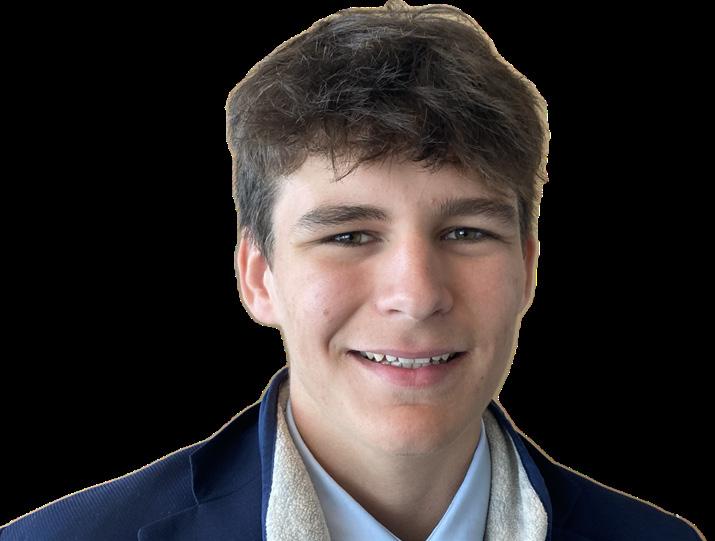
Pennsylvania is a swing state, but what does that mean?
According to one definition, it is a state that “plays a key role in the outcome of presidential elections.” It is one of a few key states usually decided by narrow margins. In fact, in 2020, Pennsylvania’s 20 electoral college votes put President Joe Biden over the 270-vote mark needed to win.
In 2024, Pennsylvania is worth 19 electoral college votes, making it the sixth-mostvaluable state in terms of electoral college power. The 19 votes Pennsylvanians control are crucial to victory for both candidates, as 19 is the most votes of any swing state.
Growing up in New York, I never saw many political ads. It was almost a certainty that the state (or at least my area) would vote for the Democratic nominee in November.
In Pennsylvania, it is impossible to
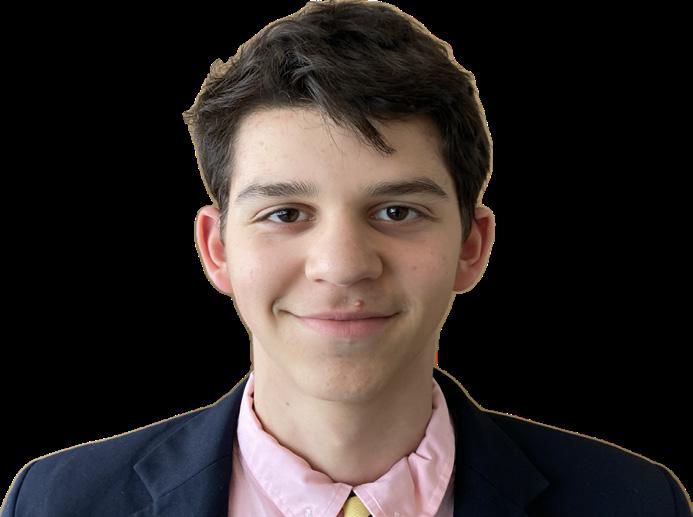
Sitting for the SAT, or the Scholastic Aptitude Test, perhaps the most stressful time in a high school student’s life, has just gotten more stressful.
The SAT dates back to 1926. Since then, scoring has changed, but access to official past exams has not. Until now.
Students in the past—as well as their eager parents readying themselves for battle—would order brick-heavy books issued by Princeton Review and Kaplan, and lock themselves in their rooms with their vocabulary lists, practice tests, and timers.
That all changed on March 9, 2024, with the first digitally administered SAT.
What is different? According to the College Board, the time is shorter, cut down from a whopping three-hour paper and pencil exam to a two-hour digital test on Bluebook, the College Board portal. The digital SAT has shorter reading passages, with only one question tied to each passage, and a built-in Desmos calculator. Sounds easy.
What else is different? The College Board offers no release of past official digital exams. For reasons that remain unclear, this decision will undermine the daunting task of preparing for this test.
The College Board releases “practice” tests and makes available a database of thousands of questions into which one can forage. Prior to the March testing date, the College Board released four digital practice tests. Not only is this an insufficient number of practice tests for a student who wants to take three times as many tests, but the practice tests were not comparable to the level of difficulty experienced on the real digital SAT.
Test takers going into the March exam thought they were ready. After all, the College Board issued these practice tests, so they must be representative of what students would encounter on the real exam, right?
Wrong. The internet was flooded with screaming parents and stunned test takers regarding the math section for many and all
avoid advertisements, from looking through the mail to watching an Eagles game. The back-and-forth of candidates suffocates you.
While every person gets the same vote, it does not have the same impact.
The Electoral College was designed to enfranchise underrepresented areas of the nation, overlooked by a popular vote.
According to the Pew Research Center, more than six in ten Americans favor moving away from the electoral college. This discussion has gained more attention, as in two of
the past five presidential elections, the candidate who won the popular vote did not win the election.
In 2020, President Biden won the popular vote with more than seven million votes but only won elections by margins as small as 50,000 votes in crucial swing states. This is why Pennsylvania is so important.
While every person gets the same vote, it does not have the same impact.
Pennsylvania’s 19 electoral votes were won by fewer than 82,000 votes in the last election. Shockingly, fewer than two out of three eligible citizens voted in 2020. This is why candidates are eager to convince people to vote and, more importantly, vote for them in states like Pennsylvania.
Right now, the margin of the 2024 Pennsylvania election polls is half a percent
in favor of Vice President Kamala Harris. Furthermore, out of 100 election simulations of Pennsylvania, both candidates won the state over 45 times. The national polls are so tight that it is very likely the election will come down to the result in Pennsylvania.
Democracy functions as participation, but when an election comes down to the votes of a certain few based on where they live, many begin to question the system. Still, the Electoral College is here to stay for 2024, and the election outcome could come down to Pennsylvania voters.

practice SATs released by the College Board.
In a press release from the College Board, Priscilla Rodriguez, Senior Vice President of College Readiness Assessments, said, “Our goal was to provide a testing experience that is more relevant to today’s students and is less stressful for students to take.”
The Digital SAT, however, releases no tests other than their own made-up tests.
It is definitely not less stressful.
Director of College Counseling Damian Long agrees.
“The loss of the College Board’s Question and Answer service on official tests is far from ideal during this transition to the Digital SAT,” Mr. Long said.
And herein lies the problem. With the paper and pencil SATs, past official exams were everywhere. If a precocious student utilized enough past official tests, like anything else, practice makes the proverbial perfect and most likely in combination with some sort of tutoring, was a good indication of scores to be attained. The Digital SAT, however, releases no tests other than their own made-up tests.
According to Sixth Former Xan Matuch, the lack of past official tests impacted his preparation. “The last few questions on the digital math are slightly more challenging than they were in the physical prep that I did, which really threw me off the first time I took it,” he said.
Fifth Former James MacColl had a similar opinion before taking the August digital SAT for the first time.
“I don’t mind that the new SAT is digital, but I do wish that I could have prepared using actual past administered tests, or at
least practice tests that were of the same difficulty,” MacColl said.
Then there’s the adaptive component. The what? There are two modules per section for both reading/writing and math. The better a test taker scores on the first module, the harder the questions become on the second, with more points allotted to correctly answered, harder questions. But what those points are and how questions are rated in difficulty accounting for those points is anyone’s guess. Anyone except for the College Board.
Haverford has attempted to make this transition palatable for its students
Mr. Long remains optimistic that this problem will be remedied in the future, “[As] a professional who has witnessed
countless adjustments from the College Board over my career, I would emphasize the key language of ‘at this time.’ The College Board is receiving significant feedback from recent spring and summer testing, so it will be interesting to see what updates come next,” Mr. Long said.
Haverford has attempted to make this transition palatable for its students. According to Mr. Long, “[We] leveraged our partnership with Compass Education Group to provide families with expert insights, adaptive diagnostic testing experiences, and valuable resources leading up to this transition to the Digital SAT.”
“Haverford families can look forward to even more from us this year around standardized testing, especially with the ACT also announcing changes to come in the future,” Mr. Long said.
While it is too soon for students who are currently embarking on the SAT journey, one can only hope College Board, longing for the past, releases past digital tests to give students their best possible chances of success.
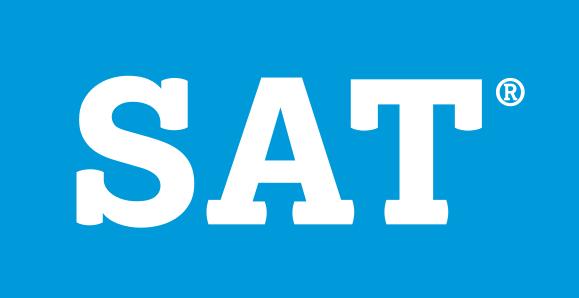
For most of my life, I have sought definite answers. I valued facts over theory, logic over thought, and explanations over the unknown. Over the last few years, however, my thought process has changed.
I come from a religious family. We practice the ancient Indian religion of Hinduism, one of the oldest religions in the world. Despite that, I have spent most of my life not believing in God. I was truly an atheist and believed in science to explain the creation of life.
During every prayer or religious ceremony when I was younger, I always felt out of place. I did not understand the language they were speaking or the stories they were telling. Through my eyes, I was wasting my time.
In contrast, I am currently a devout believer in Hinduism. I believe that God will guide me in the correct direction and that I should always follow the will of God.
So, when did my worldview change?
In October 2021, my grandmother passed away from a stroke. She was 88 and had lived a great life until the very end. My parents and I traveled to Pleasanton, California, for the funeral and to say our final goodbyes. I had never been to a funeral before, and I asked my parents what it would be like.
They told me how a Hindu funeral works. They explained that we all wear white clothing, we all say prayers and mantras for the deceased, and then we cremate them with various belongings we wish for them to have in their next life.
Although I loved my grandmother deeply and had so many good memories with her, I was a little annoyed that we traveled for an entire week to conduct what was simply a religious practice. I saw it as a waste of time, especially because I was just starting my second month at Haverford. I was enjoying it there and did not want to leave.
The funeral was sad but beautiful,
which is how it should be. We said our goodbyes, and then I went to my cousins’ house while my parents stayed behind to cremate the body. When we got to the house, we lit a candle next to the picture of my grandmother and then played her favorite board game, Ludo.
The candle stayed calm for the next hour, and we continued to have fun. Eventually, my parents called and said that the cremation was about to begin. On video, we saw the coffin enter the furnace. I turned my head and caught a glimpse of the candle. It rocked back and forth violently, a drastic contrast to its behavior before.
This was the first time when I began to think about God being real. Science could not explain the candle’s change when considering that the cremation started at that exact moment. It was the first time that I had a genuine thought that questioned my atheist beliefs, and it ultimately started my journey towards embracing Hinduism.
About a year and a half later, I had my Thread Ceremony. Called a Poite in Bengali, it is the rite of passage for boys of the Brahmin caste.
I was initially dreading it. I would have to spend three days in a room, eating very strictly and having little entertainment. In addition, I would have to go through two full days of prayers, many of which I would have to memorize fully beforehand. Perhaps
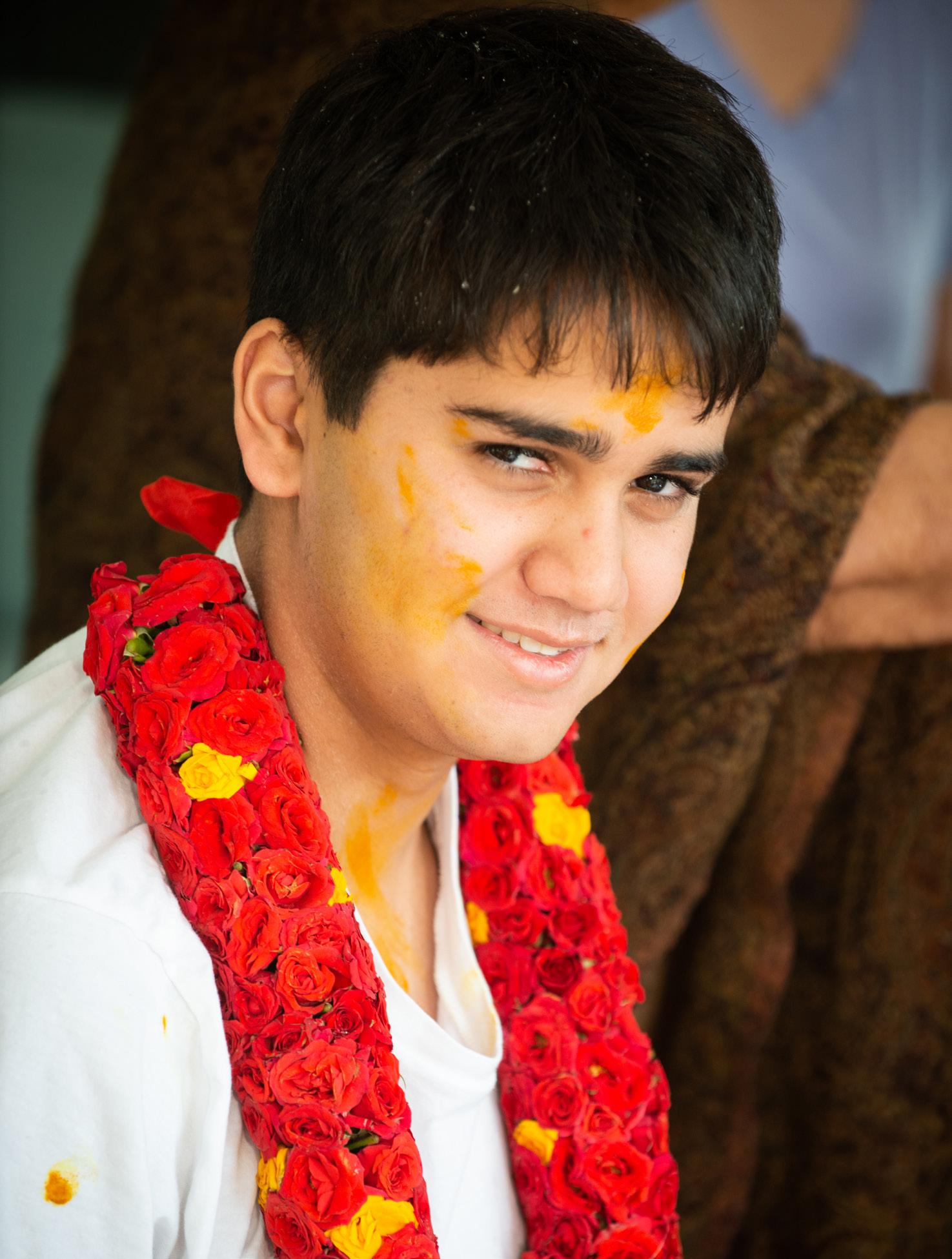
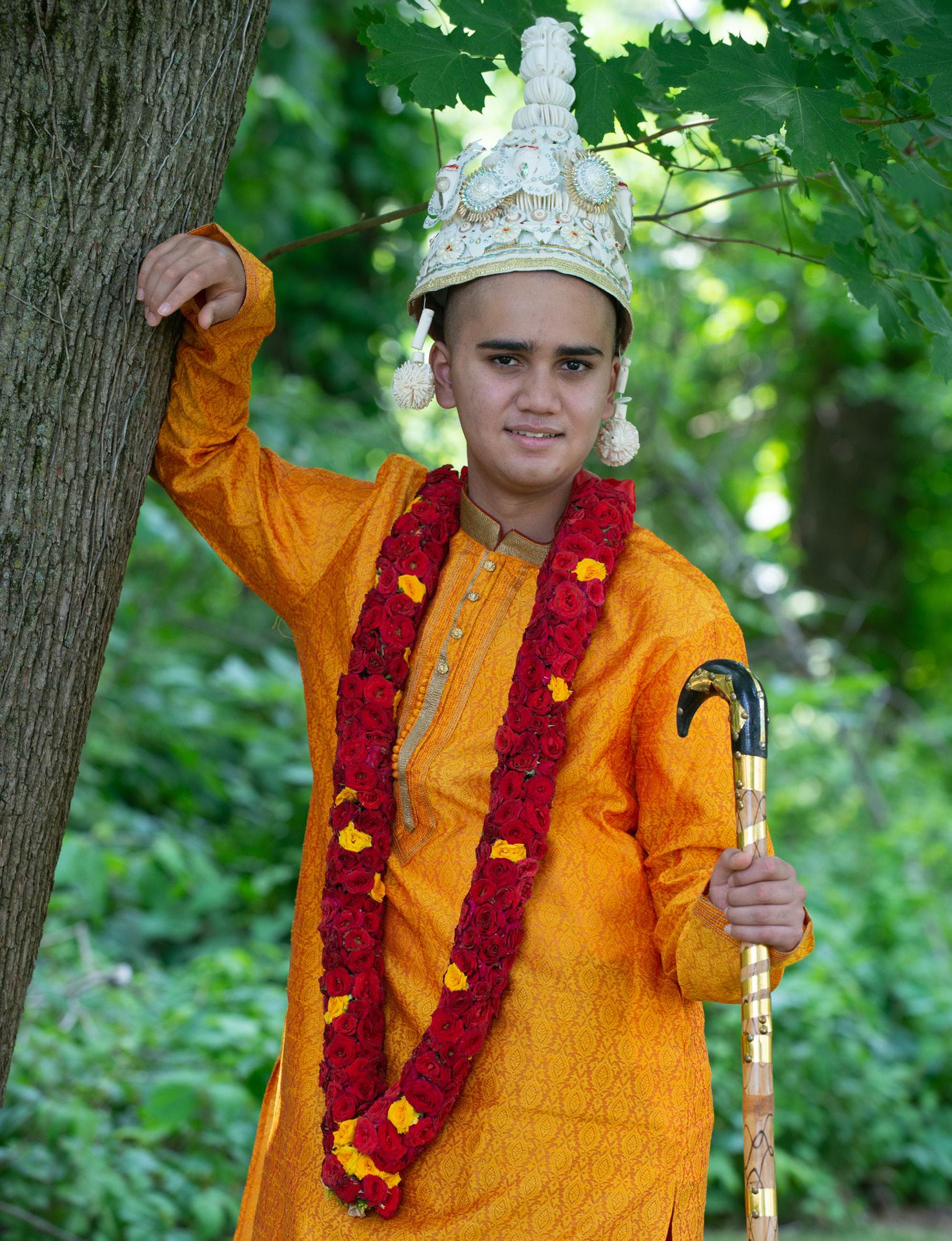
most importantly, I would have to shave my head completely.
However, I went into the ceremony with a more open mind. I decided to embrace the words and prayers the priest repeated. It was one of the first times that I felt a real connection to the religion. Many of the words were put into English for me, which allowed me to see what I was participating in.
During my three-day retreat, I spent a lot of time reading the Bhagavad Gita, also called the Song of God. While reading, I saw a line. It said, “Man is made by his belief. As he believes, so he is. You are what you think you are. Your thoughts make and define you.”
I was always someone who believed that little was impossible in terms of my potential feats and accolades. This was the first time I heard these beliefs put into words, and I realized that I completely misunderstood what Hinduism was about. However, it still was not enough for me to consider myself completely religious.
On the last day, I was getting ready to leave the room I had spent the last three days in. I was relieved, tired, and excited all at the same time. The last thing I wanted was to relive those past few days of complete solitude. However, there was a brief moment when that happened. I was alone again. At that time, I read a line from the book that truly changed my life. It made me realize why Atheism was not for me.
“Perform every action with your heart fixed on the Supreme Lord.”
I deeply resonated with the fact that we as humans have a deeper purpose than to live and reproduce, as science suggests.
The book offered a different perspective that made me content with my life and the world around me in a way that my previous Atheist beliefs never did. Even though the principles outlined could never be proved, I was able to easily understand them.
When I came back, I made a promise to myself to embrace Hinduism and all of its wonders. Now, when I attend religious ceremonies, I always make sure to be present in the moment, even if I do not understand the language.
For anyone reading this, I have two takeaways.
The first is to explore both your beliefs and the opposing side of your beliefs. I was completely confident in Atheism for most of my life, but as soon as I explored the other side, I realized that Atheism was not for me.
The other is to be engaged in everything you do, even if you do not like it. If I had been truly engaged in prayers when I was younger, maybe Hinduism would have made sense sooner.
It is important to keep an open and engaged mind at all times, even when it does not seem necessary.

All because of eating dinner on a peaceful February evening in the dim light at the Philadelphia Country Club with my mom and grandmother, I had a rocky future ahead.
I remember when my grandmother stated, “Have you ever considered going to Haverford?”
My response was, “It’s been in the back of my mind, but never something I thought I would do.”
At the time, I had no trust in the idea that the hardest things in life can bring out the best results, since I was unwilling to do anything that seemed foreign to me.
Humans achieve the best results through negative situations, proven by the experience I faced transitioning to a new school. I have learned to be grateful for the difficulty I faced bringing me to where I am now.
Prior to this massive change in my life, I was scared of trying anything new, thus the switchover resulted in a metamorphosis of a new capability of mine to try new things. If I had never come to Haverford, let alone dealt with all the terrible experiences it took to get where I am now, I would have never encountered the new version of myself willing to no longer be the reserved boy I once was.
Within negative experiences, the way in which we have to deal with them results in more achievement as opposed to a positive experience. If everything we gained was through something good, then we would not feel any achievement. However, if adversity arises, more achievement results due to overcoming that negative situation.
Therefore, happiness is not the most beneficial and thus is unimportant. What is most valuable in life is the adversity faced through trials and tribulations which bring us to the most valuable results.
On the morning of February 21, 2023, I showed up to the busy, bright, and modernized Haverford School. For the preceding month, everything involved deep decisionmaking.
If I wasn’t doing something to distract myself from this thought-provoking decision, I was thinking about what I was going to do with my future. Anger and anxiety were the result of me persistently thinking, “Why would someone want me to go through all this?”
On a dreary Saturday morning in late winter, I took the entrance exam and received word a few days later: I had passed. I now had the biggest decision of my life to make. I had a stressful two-week period in which I had to decide if I was going to enroll at Haverford for the 2023-2024 school year.
All I wanted was to go back to the life I was living without having to think about any of this. I didn’t want to make this unnecessary changeover. I was happy with the way I lived my introverted life of going to school, participating in class, swimming, spending time with church friends and my neighbors, and working hard to earn excellent grades.
Looking back, what I thought was such a small issue was a much greater problem: I didn’t have any good friends.
After ten long days of thinking, the night before March 24, 2023, I made up my mind: I was committed to The Haverford School.
The first people I told were my neighbors; I was feeling pretty good about my decision. I even told my mom, but I said, “I wanted to wait until the next morning to give my final verdict.”
I woke up; and shortly before my dad left for work, I declared it to my parents. A few minutes later, I was left in turmoil sitting on the couch, tears rolling down my frustrat-
ed face, in a mess of my foggy, scary, uncertain future. I was so angry with my family for forcing me into what I thought was a trap.
How should I proceed with my life? Did I want to leave all my friends from the swim team and leave behind all of my amazing teachers? My mind completely switched from being committed to Haverford to a regretful, indecisive mess.
Should I go to Haverford, a place that could land me into an incredible college and life after that, yet still with the risks of people treating me disrespectfully and the feat of meeting completely new people? Should I stay where I am, living my same content life?
I regretfully proceeded with my decision. However, a short-lived boost of confidence arose when an excellent teacher told me it was really good I was heading to a private school.
I still couldn’t bear the idea of leaving her and all the other amazing teachers I had. I couldn’t fathom the idea of this being a good thing for me, so I didn’t tell anyone where I was going. It all seemed like a nightmare that would end and everything would return to the life I called “normal”.
Until the new school year began, this ideology sat with me. Throughout August, stress encompassed me into a bubble of frequent mental breakdowns where I still lived in the nightmare. Eventually, it became reality.
As I continued to think it would end, the day before school started, I was more terrified than ever. I got onto my hands and knees, tears rolling down my fragile face, and prayed in complete and utter panic knowing I was entering a terrifying zone of new people who I didn’t believe would welcome me.
On the hot, bright, first day of school, I hopped out of the car with the best smile I could muster, along with other students bus-
tling around figuring out where they were going and catching up with their classmates they hadn’t seen in months.
The nightmare came true, just as I expected. People didn’t welcome me. All alone, I lived exhausting bad days for the first few weeks. No one accepted me; I even doubted my teachers to welcome me. Day by day things got better, here and there people talked to me, but just as afraid as the new guy was to talk to new people, everyone was afraid to talk to the new guy.
A few weeks into the school year, Glee Club began, and I slowly met some more people. One day, a few weeks into Glee Club, the nicest person in the school introduced himself to me: Render Ford ’24. He kindly mentioned how I was singing something slightly incorrectly.
I had a few acts of kindness directed toward me in the beginning of the year, but nothing that made me feel so special.
Walking out of Glee Club, Render and I spoke for a few minutes as we got to know each other. Render was courageous enough to accept and welcome me with humility in its purest form; what he did for me was the first flash of hope that there were people willing to welcome me at Haverford.
Looking back, my experience transferring as a sophomore in high school to a new school reveals to me the importance of the fact that the riskiest paths life brings can be the most rewarding.
I now realize that it isn’t through happiness but rather the struggles in life which are most fruitful. My experience through the process of switching schools reveals the significance of risk-taking through difficult situations.
Though I suffered the adversity of the risk I took coming to Haverford, it brought a new life of memories and lifelong friendships which will never be forgotten.
Surreal success from overcoming fears and hesitations arises from diving into the riskiest situations with the most reward, taking you into a world full of incredible new opportunities.
Therefore happiness is not always the key to success; rather, adversity yields the greatest results.


In the Everglades, the Floridian swampland where humidity blankets the back of your neck like sweat, mosquitos cry in your ear after sucking your blood, begging for more. The water below you snaps back with 80 pearly whites, and the Spanish moss obscures you from seeing more than 20 feet ahead in the marsh. However, in this repugnance, one can find a lush splendor in the green mangrove forest and the dozens of endangered species which make their home in its salt and fresh waters.
In this wet, hot, and muddy album, Doechii invites the listener to the swamp in her most confessional release yet.
This beauty and unpleasant reality pervades Doechii’s late summer release “ALLIGATOR BITES NEVER HEAL.” In this wet, hot, and muddy album, Doechii invites the listener to the swamp in her most confessional release yet.
The fumes that emanate from her marshy home smell of decay and decomposing matter. Her intimacy with and apprehension towards death is expressed in “STANKA POOH,” which Doechii begins, “Let’s start the story backwards/I’m dead, she’s dead, just another Black Lives Mattered.”
Lacking levity, her lyrics sink in the muck, dragging the listener with them. Intrusive thought bubbles of methane emerge from the bottom of the swamp with an anxious pop as she questions: “What if I die a Taurus?/What if I die on purpose?/What if it wasn’t even worth it?”
Doechii struggles with self-worth and expectations while maintaining a calm flow. Never once does she falter, letting the creeping fear jump out of the water and pull her
under. Instead, on “CATFISH” she asserts “I’m the hardest rapper, this yo’ [explicit] training day.” Doechii is the alligator, the self-proclaimed “Swamp Ruler.”
While she swamps the rap game, Doechii still has time to reflect on her career. Starting with 2019’s Oh The Places You’ll Go, she debuts her therapist alter ego that helps her overcome problems in song.
On “DENIAL IS A RIVER,” Doechii sits down for another therapy session to break down how fame leads to drugs, and how drugs deplete one’s self-worth. After divulging her addiction, her therapist leads her in a breathing exercise with which Doechii ends the song prematurely—hyperventilating in a panic attack.
Continuing her confession on the interlude “BLOOM,” a voice memo of Doechii and an anonymous counselor reveals that Doechii is not always the gritty, flawless rapper persona she exudes.
She says, “You gotta make sure your bills are paid, but you gotta make sure you have fun and time for you, time for your friends. And like, I just constantly feel like I’m neglecting parts of my life.”
Her partner in conversation responds, “Nope, nope, God made a day twentyfour hours. It’s not a lot of time. Because, you, you just can’t do it all in one moment. There’s past, present, and future. You gotta put pieces in places, it’s 24 hours.”
Doechii’s strength comes from sheddin her alligator scales and sharing her desires and insecurities.
Like most ambitious people, Doechii struggles with staying on top of everything. Creating an efficient schedule is hard, especially when that schedule requires sessions in the studio, a national tour, and hundreds of media interviews (all for the point of staying
relevant in the pop-culture conversation). Luckily the more one practices, the easier it gets—the motivation and grind start to arise from within.
“Life is just like a bike, it don’t move unless you pedaling,” Doechii sings on “WAIT,” reminding us that we are only as strong as we let ourselves be, and that the grind to change one’s life comes from within. On this album, Doechii’s strength comes from shedding her alligator scales and sharing her desires and insecurities. She reveals, “I might look fly in the matrix, I hope I’m sticking my landing.” Doechii acknowledges that while she is “that girl,” achieving a niche “it girl” status through her groovy singles “What it Is” and “Persuasive,” she still feels insecure about her place in pop culture and the rap industry, hoping that she’s stuck in the collective consciousness.
Her rant is an expression of annoyance that her rapping talent is not taken as seriously as a hook and sample that goes viral on TikTok and makes it to the top 40.
And Doechii has made her mark. On “BOOM BAP,” a playful interlude, she acknowledges the absurdity of her accomplishments, playing with the title of her viral song “What It Is.”
She rants, “You know exactly what it is, the choir gon’ sang ‘What It Is’/Top one hundred, what it is? Número uno, what it is? / Favorite song, what it is? / Turn me on, what it is? / Even the moms know what it is, but y’all n***as can’t see what it is.” Playful and curt in her response, Doechii explains how a single song going
viral can suddenly result in a shift of expectations. Doechii is a rapper, but her viral song does not contain any rap in it. Her rant is an expression of annoyance that her rapping talent is not taken as seriously as a hook and sample that goes viral on TikTok and makes it to the top 40.
SZA, a collaborator of Doechii’s, expressed a similar sentiment. It’s always the songs that artists spend little effort on that end up going viral. They would instead prefer that the public and their fans take the time to appreciate the songs that they’ve poured hours of work into.
Each song feels like it was made with intention, that the perfect mood was imbued into each song
Doechii does just that. Each song feels like it was made with intention, that the perfect mood was imbued into each song. That may be why there is a consistent, clear but swampy feel carried throughout the album, why the album and its songs did not chart as well as previous singles, or why the album feels confessional in its nature.
In an interview with Apple Music, Doechii reflected on the album, “ALLIGATOR BITES NEVER HEAL.” She’s had it “tattooed over her heart for a while.”
In a candid clarity, she says “There will always be a situation that will puncture you or wound you, or hurt you, but at the end of the day in a way ironically, you will heal, and scars will always be there to remind you what happened, but it’s kind of like a victory thing.”

In the age of the internet, it can be hard to stay present in the here and now. One may often find oneself wondering anxiously about what is to come in the days ahead, wishing there were someone to tell you, This is How Tomorrow Moves.
In beabadoobee’s most recent album, feelings of hope and ambition weave seamlessly into beautiful lyrics accompanied by harmonious melodies. This auditory masterpiece is a reflection of the inner workings of beabadoobee’s mind.
In track one, “Take A Bite,” Beabadoobee describes toxic behaviors she’s identified in her romantic relationships. She describes a pattern of self-sabotage: creating the perfect mental image of an unattainable partner and attaching herself so firmly to that image that she causes the downfall of their illusory relationship.
She “[craves] expectations that are unattainable temptations.” While this doesn’t sound like a positive song, beabadoobee admits her faults as if she’s in talk therapy. By talking about the things she does wrong, Beabadoobee may be able to move past them.
Track two, “California,” is all about change and how it often takes some sort of negative impetus for that change to occur. Maybe this change refers to a change in a relationship like in the following track, “One Time,” where beabadoobee describes how a relationship of hers ended as problems began to spring up and the couple ignored them—feeling a sense of hopelessness.
This lover could even be the same one as that from track four, “Real Man.” Here, beabadoobee gives herself up to her partner, not accepting anything in return. In the chorus, she repeats,
“I guess no one ever taught you how to be a real man,” referring to his inaction in the relationship.
This idea continues in track ten, “Post,” where beabadoobee wishes her boyfriend would acknowledge her—and validate their relationship—in a public setting like a social media post. Maybe beabadoobee’s struggle with romance lies in her strained relationship with her father described in track five, “Tie My Shoes.” Here, she sings about want-
ing more from her father and feeling like he’s able to fix her problems, a desire born from never receiving the validation she craves so badly.
Unfortunately, in track thirteen, “The Man Who Left Too Soon,” beabadoobee describes the waxing and waning of her sadness in relation to her father’s death. She does take solace in the fact that they both looked at the same moon, one of the only commonalities she seems able to find with someone so closed off.
Track six, “Girl Song,” shifts away from beabadoobee’s relationships with others and focuses instead on her relationship with herself. She sings about her insecurities and how she feels like she’s disappointed those in her life. She feels like every day is different for her mentality. She’s grown tired of fighting her own emotions.
Returning to her relationships, track seven, “Coming Home,” describes the times beabadoobee has let down her partner. She begins the song by trying to describe how they can move forward with their relationship after she’s disappointed him so many times because of her career choice.
She ends the song by saying, “I’m not sorry ‘cause this time I won’t be late,” essentially telling her boyfriend that she will work harder to be there for him in the future.
In what might be the most unabashedly joyous song on the album, she describes how beautiful her boyfriend is and the “high” he gives her.
In the album’s eighth song, “Ever Seen,” beabadoobee may be describing the beginning of the aforementioned relationship. In what might be the most unabashedly joyous song on the album, she describes how beautiful her boyfriend is and the “high” he gives her. Another such joyous song is track eleven, “Beaches.” In this song, beabadoobee describes the feeling of inspiration she gets
from the environment she’s curated. She repeats,
“I’m sure now, I’m sure,” possibly insinuating she’s sure she’s made the right decisions in life.
One of the first female characters of the album appears in track nine, “Cruel Affair.” Here, beabadoobee describes a sense of jealousy towards a seemingly perfect girl in her life. She wonders why this girl is so preoccupied all the time and how she seems to have everything figured out. In track twelve, “Everything I Want,”
beabadoobee describes the compatibility of her and a partner, essentially saying she’s going to make it work how she hasn’t been able to in the past.
In “This Is How It Went,” the fourteenth, final, and arguably most important
song on the album, beabadoobee sings about what makes this album hopeful. She relates the catharsis she feels from writing music and how she’s,
“writing ‘cause [she’s] healing, never writing songs to hurt you,” with “you” referring to her ex-boyfriend.
This song ties the metaphorical ribbon on this album by actually telling the listener, ‘I’m struggling, but this is my way of coping and healing.’
This album proves that healing is not a linear process for everyone and, much like grieving, can come in all shapes and sizes.


Last week, the Fords Golf team shattered the Inter-Ac record by a staggering ten strokes in a match at Merion Golf Club West.
On September 25, the team put on a master class during the fourth Inter-Ac Tournament hosted by Episcopal Academy. The golfers shot a combined 167 strokes. Episcopal Academy had just tied the Inter-Ac record, but Fords Golf decimated the competition with class and style.
After their stellar performance, the team was tied for first in the Inter-Ac. The stand-
ings have Haverford and Episcopal Academy tied at 17-3 and Malvern in third with 14-3 after four tournaments. This recent victory may provide the team with the momentum to become back-to-back Inter-Ac Champions.
“It was a great performance, but we are still looking ahead to our next two matches,” Fifth Former Sean Curran said. “In other words, the job’s not finished.”
Curran shot a 33—two under par for the round—and was accompanied in the record by Sixth Former J.P. Hoban, who shot
a 32. Fifth Former Quinn Gallagher shot a 33, Sixth Former Gregor Weissenberger shot a 34, and Sixth Former Harrison Brown shot an even 35.
The team is ecstatic about the record but still looks to the future.
A question looming over the team: how will they perform on EA Day?
EA has proven it will not go down without a fight, putting up impressive scores of their own, so it will be a match to be remembered.
The Fords’ golf team is the strongest it has ever been, with no player outshining the
The crew team is gearing up for another competitive fall season, starting with key races along the Schuylkill River. The team is set to compete in events such as the Navy Day Regatta, the Head of the Schuylkill River, and the King’s Head Regatta. With their challenging longdistance formats, these races allow rowers to display endurance and technical skill. Boston’s Head of the Charles Regatta, one of the world’s most famous rowing events, adds excitement to the fall crew calendar.
The team started their season with a strong showing at the King’s Head Regatta, with the lightweight 4x earning gold in a fiercely contested race. This early success has motivated the team to push even harder during their training sessions on the river.
Head Coach Mr. Jonathan Stephanik has emphasized the importance of working together in unison, which has been a hallmark of the team’s approach. With top-tier competitors at every regatta, the rowers are committed to building on their recent success and making an impact in these fall races.
Sixth Former and Captain Noah Kanefsky thanks that, regardless of the tough competition, the goal is to row with the best of the best… and win.
“We have the most competitive group in Haverford history, [so] our goal as a team is simply to produce the best results in Haverford history,” Kanefsky said. “On an individual level, my goal is to win Stotes [the Stotesbury Cup Regatta, a championship regatta in the spring] and possibly compete
other.
The team has been a fluent machine, even when dealing with injuries off of the course. The players’ record-breaking performance makes them one of the strongest golf teams Haverford has ever seen, and they hope to continue to win and shatter records.
“EA has been a great team all season, and we are in a tight battle with them right now,” Curran said. “Overtaking them won’t be an easy task, but I’m confident the team should be able to get it done.” `
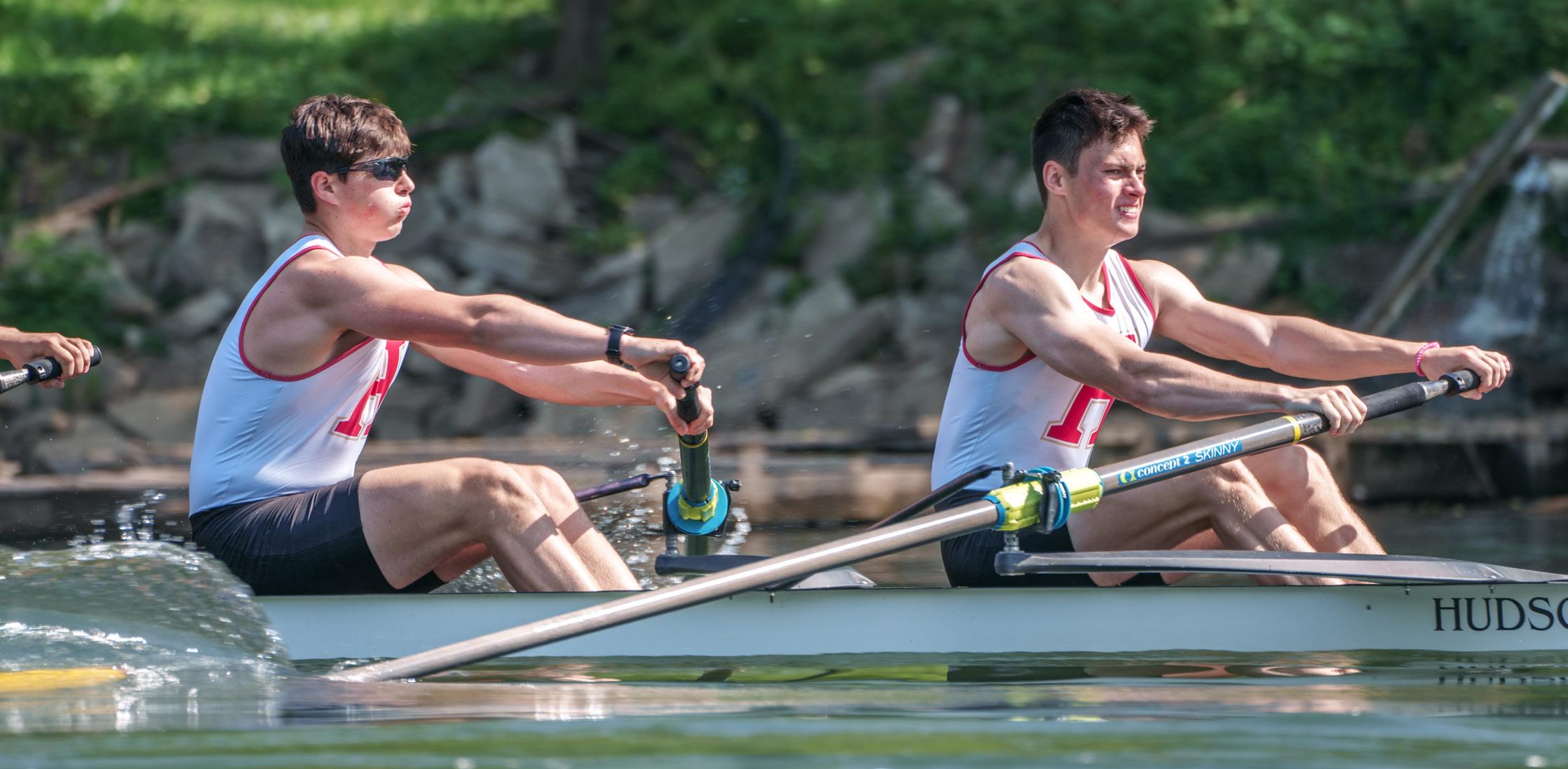
at [Youth Nationals, the crew season’s High School Nationals] or [the Henley Royal Regatta, located in Britain] this year.”
Crew is not just a physical test; it’s a mental one, too. Rowers endure grueling practices that push their bodies to the limit, whether it’s fighting through the burn of lactic acid in their legs or the strain in their arms after a long “piece” of water. When things start to go wrong on the water, Kanefsky offers a valuable piece of advice.
“Everyone has a bad practice. My goal
is to simply limit the disparity between my good and bad sessions, so going out on the water I know on my very worst day I can still push close to my peak,” Kanefsky said. “So when I go through a tough practice individually, knowing that pushing through that will help me succeed helps me handle that practice.”
This mentality becomes even more crucial in the context of team dynamics.
“What’s so unique about rowing is that you both literally and figuratively have guys
in front and behind you in the boat,” Kanefsky said. “If you stop or let up in the boat, the guys feel that. I always have guys with close times which allows me to push off of them and go with them. This is also our last year at Haverford as a group. The thought of leaving a legacy isn’t taken lightly, and having that behind us is motivation on its own.”
Nate Gill ’26
The cross-country team is entering the championship part of their season. They have four meets left, including one regular meet at Salesianum, then the Inter-Ac Championship, followed by PAISAAs. EA Day completes the season.
As only one Sixth Former graduated last year, the team remains almost the same, but it is looking a little different due to injuries and illness. Two of the top runners are out, and several are battling back from injuries. Head Coach Mr. Brian Long has repeatedly expressed one sentiment this season. “I feel like we need to get our guys healthy,” he said. “So much of our season relies on guys getting healthy.”
There appears to be a bright light at the end of the tunnel.
“Both the men out from injury and sickness seem to be improving,” Coach Long said. “If the team can get back the men who ran well last year in addition to a few uprising new runners, it could hopefully repeat and get third at PAISAAs.”
Sixth Form Captain Alex Dardarian agreed. “I think we’re just ramping up now. We are starting to hit our stride,” he said.
After a tough start to the season, where Haverford lost to Malvern Prep and Germantown Academy, the team rebounded and beat Germantown Academy in the Inter-Ac duels, earning fourth place. This effort was led by Fifth Former James MacColl, who edged out the competition.
That Saturday, the team hit the fastest course that the school would run this year: Whippets Invitational. The course is a lot flatter than the hill-dominated Belmont Pla-
teau or the Course of Hills at Episcopal. The team all achieved personal bests, with Dardarian running a scorching 16:21. Haverford came sixth overall, sneaking onto the scene and earning them a shoutout on the Delco XC podcast.
Next, the team ran for the second time at Belmont versus Germantown Academy and Springside Chestnut Hill Academy. Belmont holds a special significance for the team: to qualify for EA Day, every non-senior runner must break 21:00 minutes on the course. Haverford sneaked past Germantown to win this meet by one point with notable performances by Sixth Former Liam French, Third Former Andreas Caldroon, Fifth Former Nate Gill, and Fourth Former Raymond Kresge. They also beat SCHA by almost 70 points.
After that strong showing, the team
moved to compete at Episcopal Academy’s notoriously hilly course.
The Fords lost this meet; however, two of the top runners, French and MacColl, were not able to run. This race also solidified the roster for Salesianum, which is the most challenging course that the team participates in because it is all uphill.
Going into the championships, the team hopes to do well at Inter-Acs and PAISAAs.
“We will Hopefully be right in the middle at Inter-Acs,” Coach Long said. “And hopefully in the top half of the pack for PAISAAs. We placed third last year and hope to replicate.”
Dardarian agrees.
“We are going to go into Inter-Acs and PAISAA with this second breath we hit,” Dardarian said. “EA day is gonna be a battle that our team could definitely clutch.”
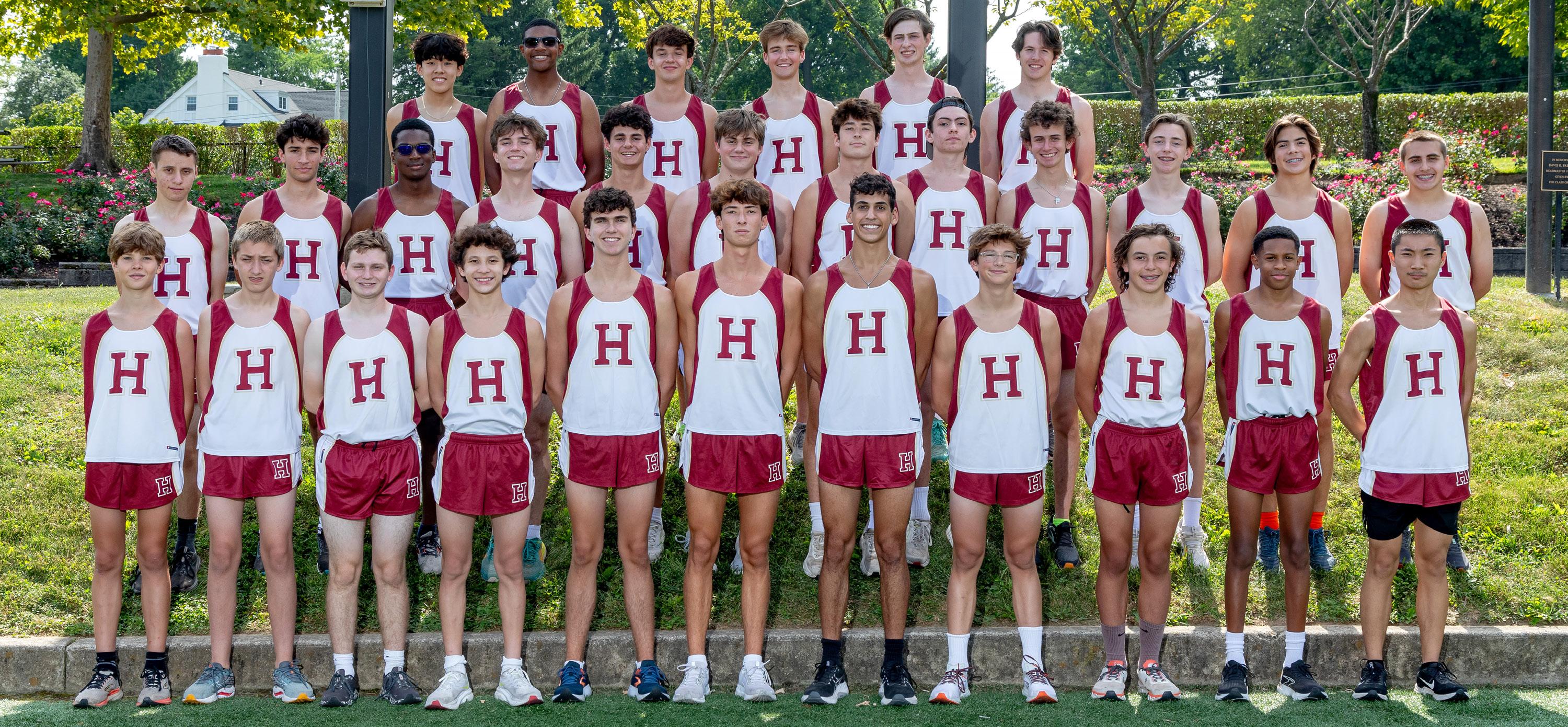


The second major challenge is injuries. Two quarterbacks have been injured.
“There are bad injuries for a few people,” Coach Martin said. “We have had a few players play one game, and we have not had a game with everyone healthy.”
The team has five games remaining in the season.
“These next five games are like the playoffs for us, so our mentality is to take it one step at a time, not looking ahead,” Sixth Former Kellen Gardner said.
“I have full confidence that this team can go 5-0 in the Inter-Ac.”
JOSH WILLIAMS ’25
Gardner has also received the honor wear number 10, the number of Kip Taviano ’13. Taviano was a Haverford lacrosse and football player who was going to play Divi-
sion-I lacrosse at Furham University when he tragically died in a car crash. To honor his legacy, a member of the lacrosse and football teams wears his number.
“It was a huge honor, not only to honor Kip but also to know all of the great leaders that wore the number before me,” Gardner said. “I came to Haverford freshman year, and I quickly learned the importance of that number and what it stands for. Last year when I was chosen it was a very full-circle moment to go from seeing other guys lead wearing that number to me stepping up into that role.”
Haverford has just had their bye-week. They are now ready for their playoffs.
“We’re just focused one week at a time,” Coach Martin said. “We are thinking about Germantown. They are always strong and well coached, so it will be competitive.”
Williams has a positive outlook on the rest of the season.
“I have full confidence that this team can go 5-0 in the Inter-Ac,” Williams said. “We just need to minimize mistakes and play with the intention of being dominant in ev-
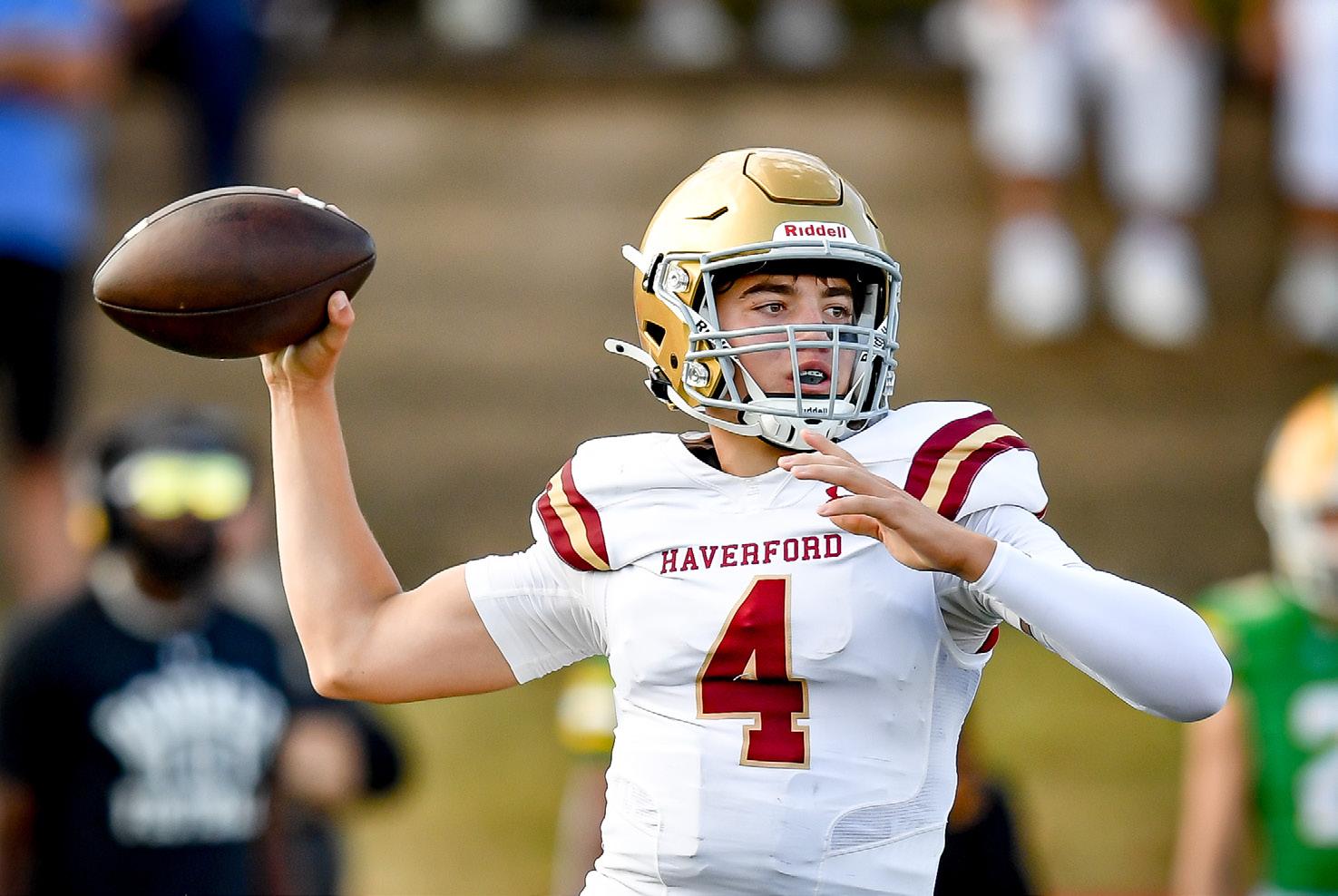
ery play. Last year, winning EA Day, but losing the football game was one of the weirdest experiences of my life. I am both smiling and crying at the same time. I can’t let that hap-
TSullivan ’25
he water polo team has long been a dominant force in the Inter-Ac League. Its impressive history includes the 2022 league championship victory.
The Fords have consistently demonstrated their strength in the pool. Competing against traditional rivals like Malvern Prep and Germantown Academy, Haverford continues to set a high standard.
Their season highlights already include significant wins, such as their strong performance in the Philmore Cup and recent victories in the Easterns tournament.
“My favorite memory from playing water polo was winning the Easterns championship last year against the Hill School,” Sixth Former Ben McDade said. “It was a big moment for the whole team and especially the coaching staff. It was the best win in my time at Haverford.”
The team has been grinding hard in the pool, aiming to defend their Inter-Ac title with an even more dominant performance this year. Early morning practices, intense conditioning sessions, and tactical drills have all been part of their preparation to maintain their spot at the top. The players are fully committed, honing both individual skills and team chemistry.
Sixth Formers are taking the lead.
“As a senior, I’m trying to show the underclassmen how to go above what’s expected of them,” Sixth Former Sean Allen said.
“I’m glad I chose water polo because everyone is so close on the team, and it carries out to the school hallways and the classroom.”
BEN MCDADE ’25
The team knows that the competition is fierce, with schools like Episcopal Academy and Penn Charter pushing hard. Their focus remains sharp as they chase another championship and aim to set new records.
Haverford water polo isn’t only just a sport, it’s a community. The team gets its own locker room, own pool, and own sense of privacy. This closeness allows and promotes strong friendships.
“I think that being on the water polo team helped me build friendships and relationships with people from all different
“Ithink everyone was hungry and just went out there ready,” Sixth Former Jay Rogers said.
The September 21st Whippets Invitational is a 5000-meter race with many teams from the tri-state area.
“It’s a quick course,” said Head Coach Mr. Brian Long.
“I
felt like I exploded past everyone and got my placement.”
ALEX DARDARIAN ’25
The Fords ran with personal records all across the board. The varsity team came in sixth place out of the 22 teams in the race.
Sixth Form captain Alex Dardarian’s 16:21 time equities to a 5:15-mile pace. With a furious finish, he placed eighth out of the 153 runners.
“I felt like I exploded past everyone and got my placement,” Dardarian said.
Another notable time came from Fourth Former Lucas Crutchlow, who finished in 17:56—a 5:46-mile pace. He finished 51st, an impressive finish for the young runner.
Crutchlow believes his pre-race routine was the key to his success.
“Pre-race is everything,” he said. “It all starts with a good playlist and warmup.”
Fifth Former James MacColl finished in 17:10. MacColl has been a consistent runner

grade levels,” McDade said. “I’m glad I chose water polo because everyone is so close on the team, and it carries out to the school hallways and the classroom.”
As they gear up to defend their
players like
and Allen are leading the charge, inspiring underclassmen and creating lasting bonds.
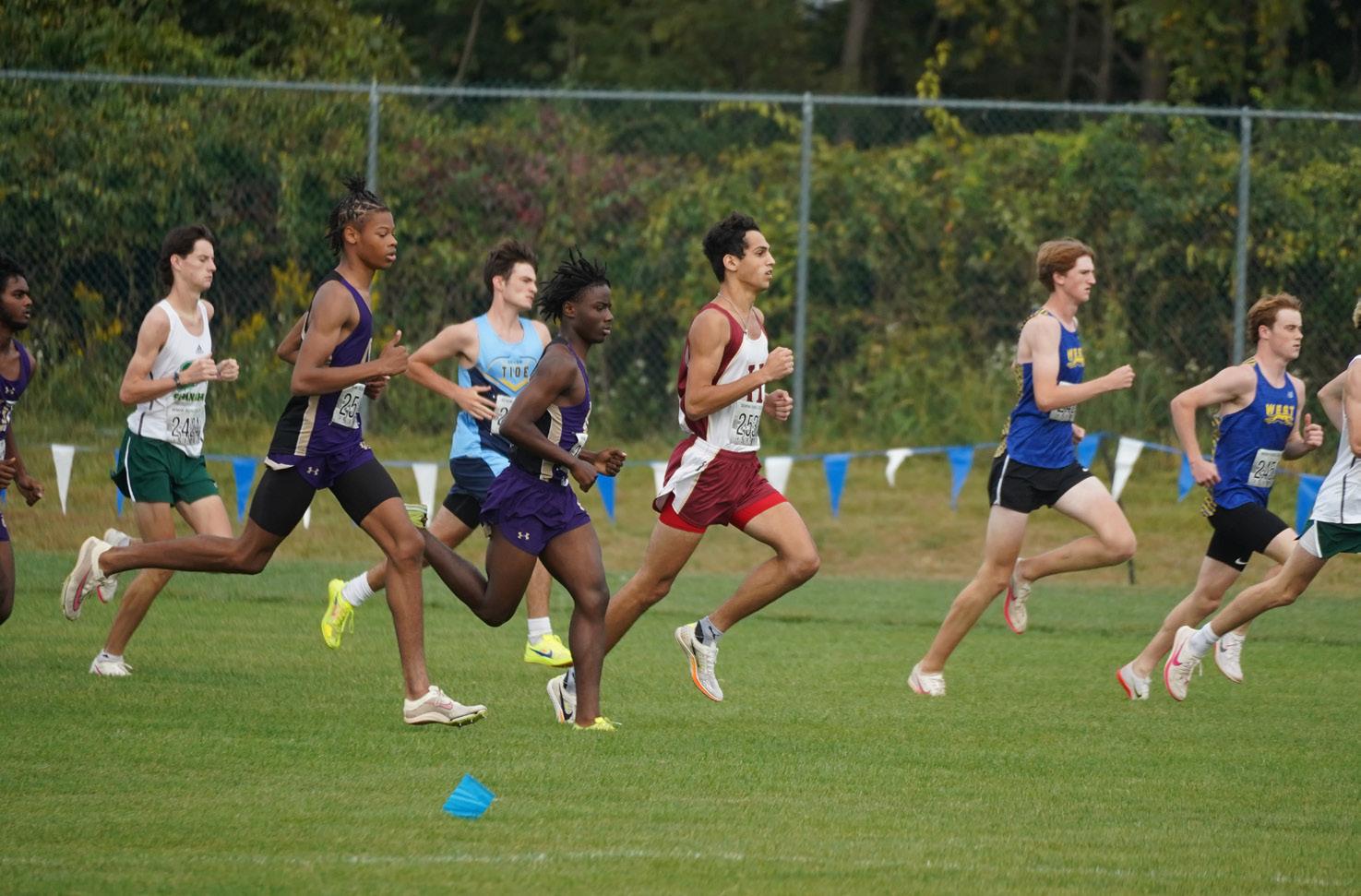
this year and pulled through once again at the Whippets Invitational, placing 28th. The Junior Varsity team also had an impressive showing, placing 2nd. The result was made possible by the 12th,